Why you can trust Tom's Hardware
Test Notes
All systems in this section of tests use our standard test bench setup listed on the second page of the article.
Rendering
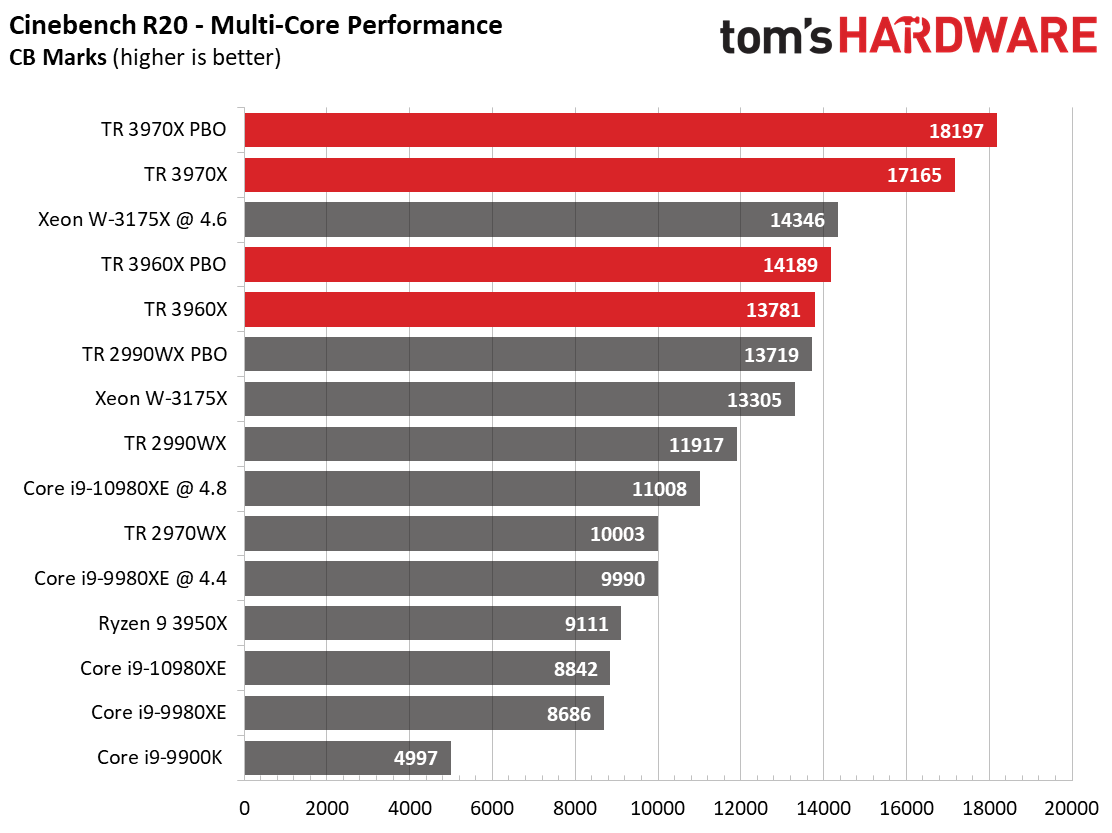
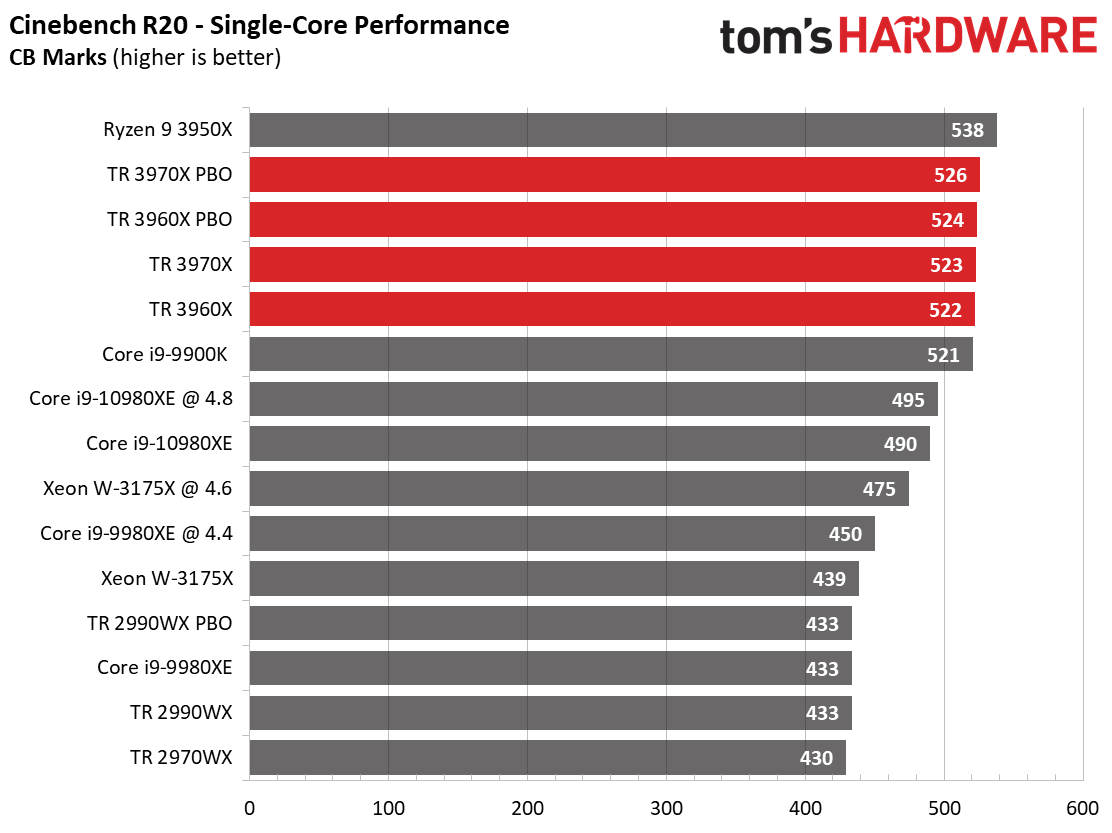
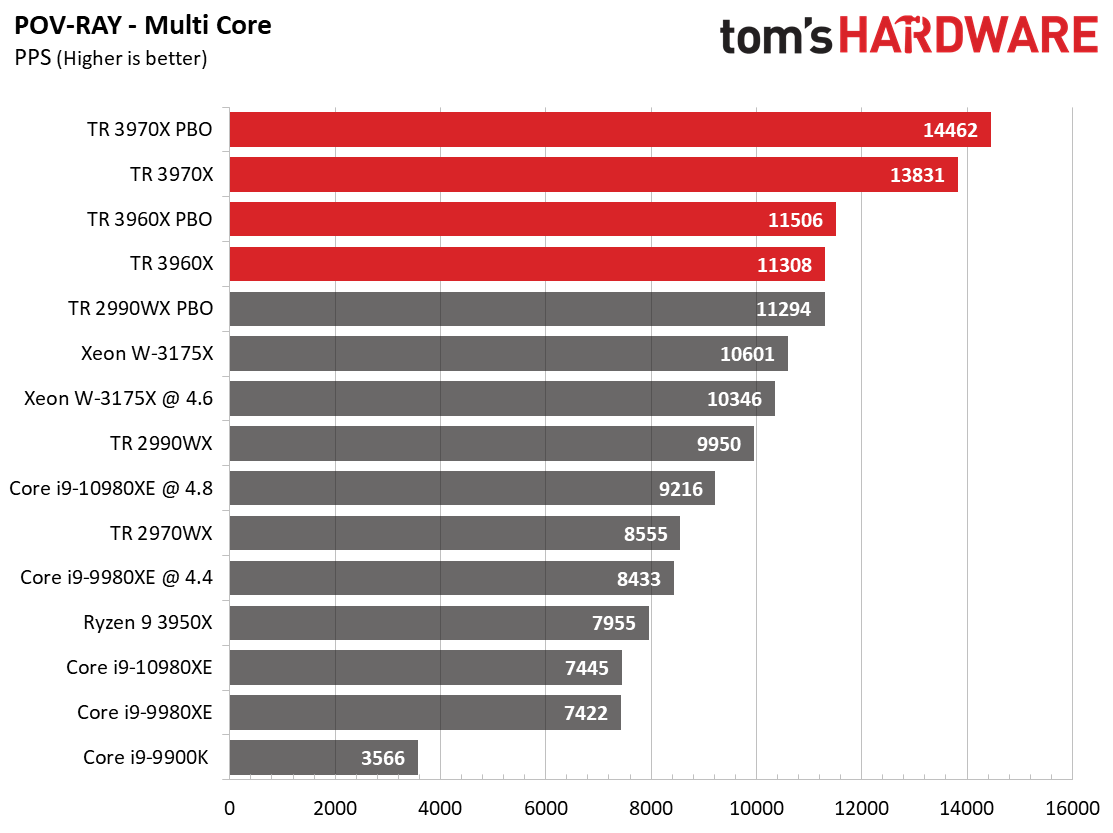

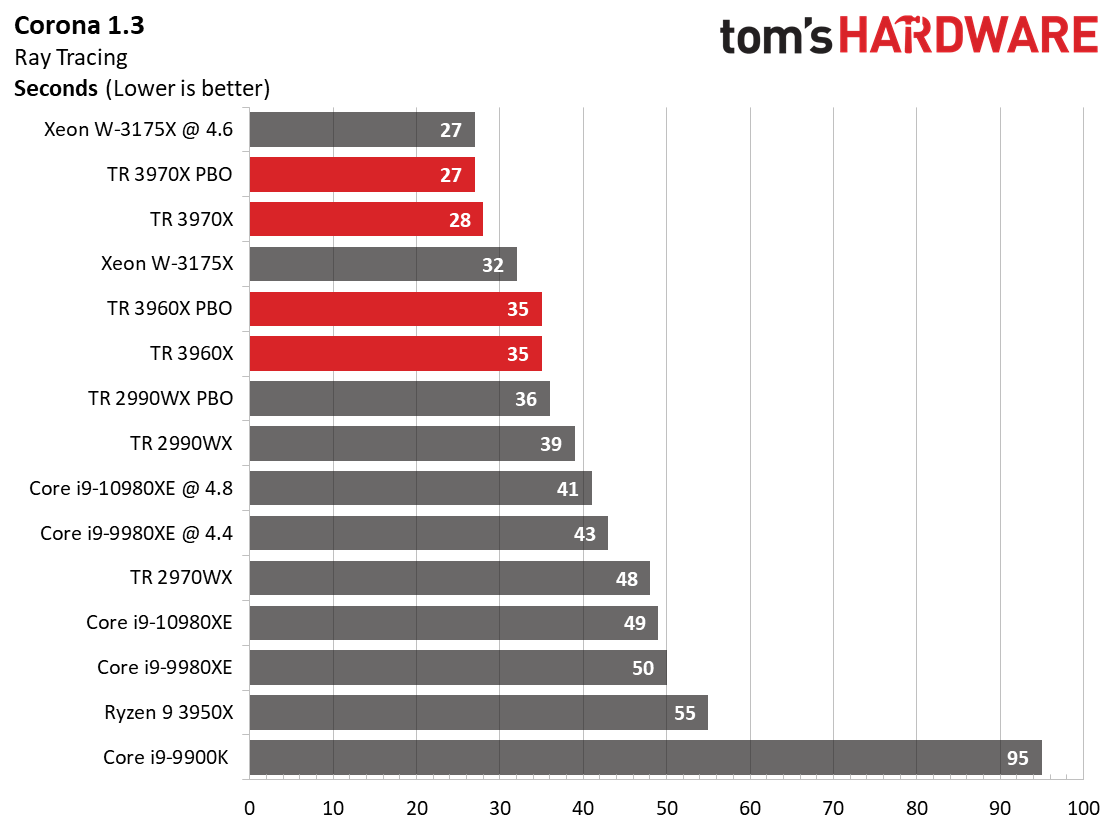
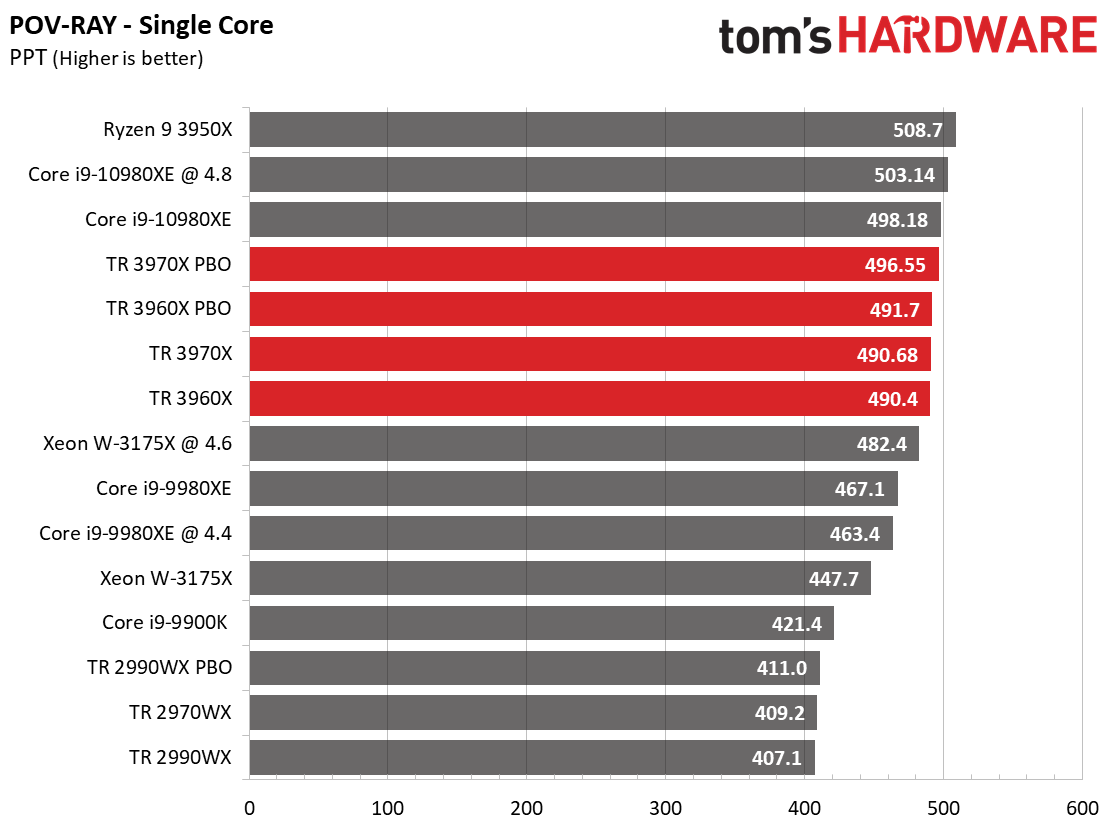
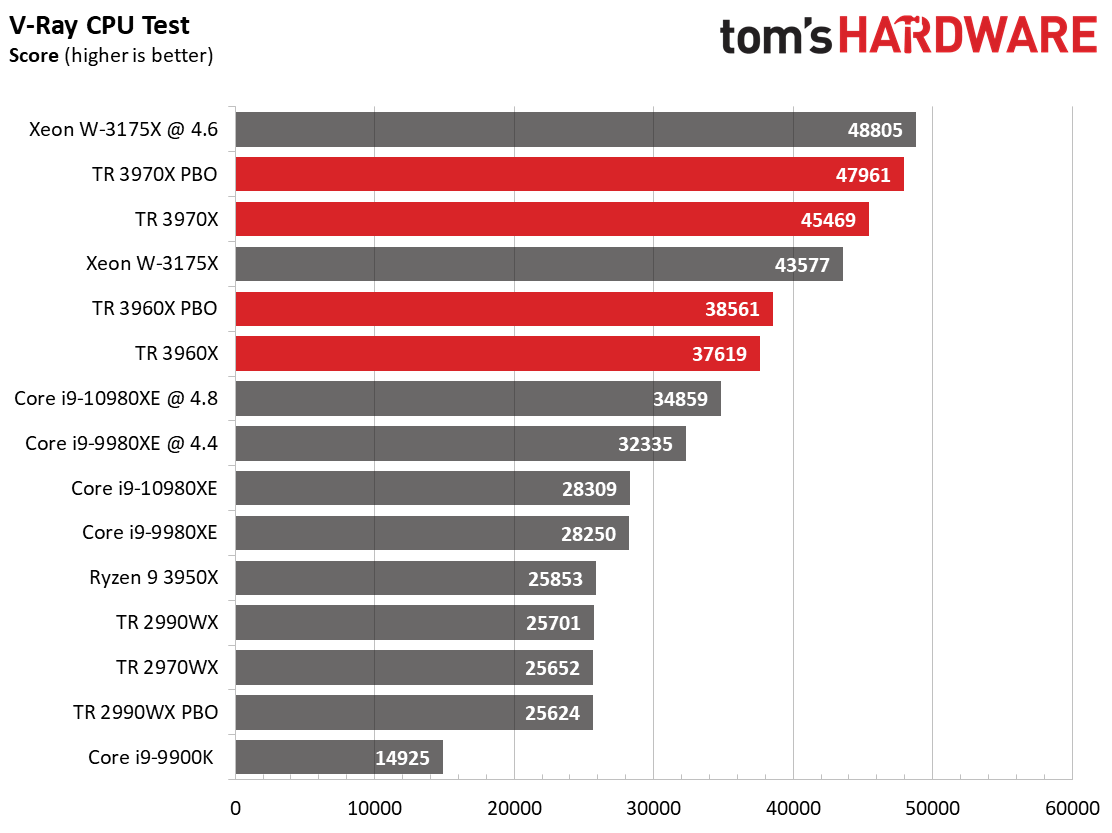
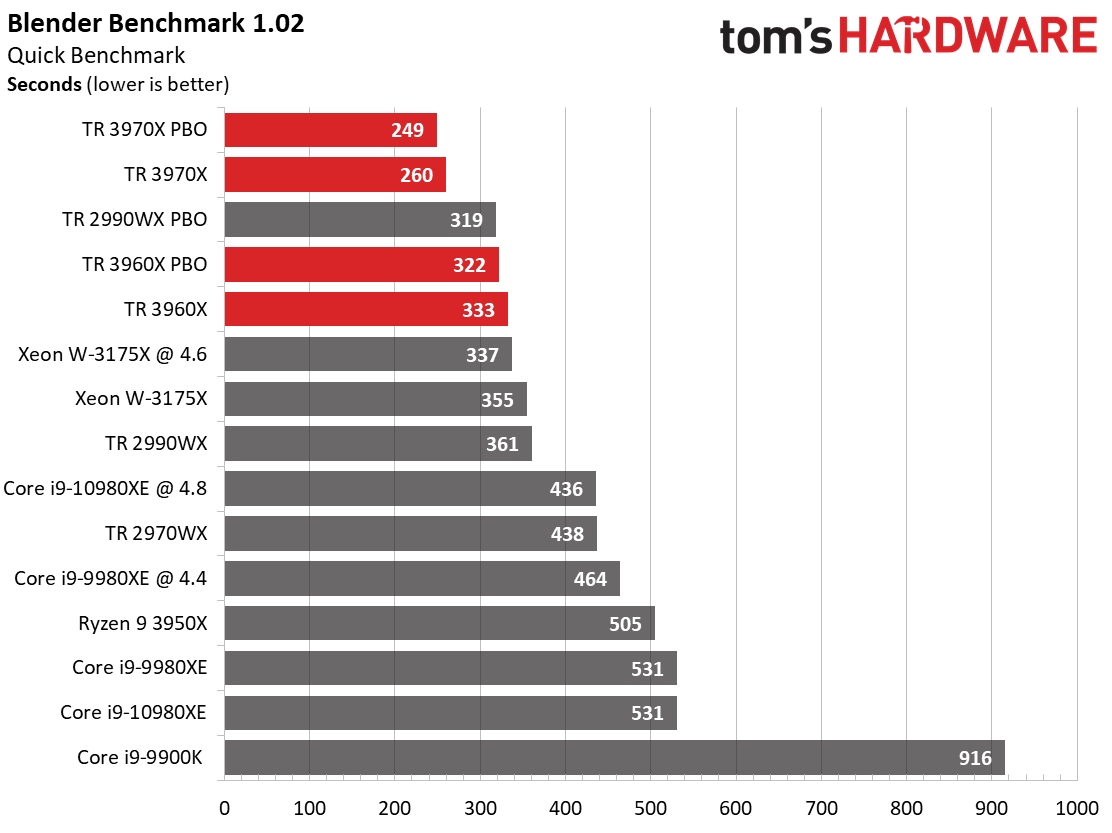
As we seen on the preceding page, rendering is the perfect use case for Threadripper's generous helping of cores and threads. As we've seen with other Zen 2-based processors, Threadripper dominates in threaded workloads, and the improvements in single-core performance is impressive. Threadripper leads the single-core Cinebench benchmarks, but the stock Core i9-10980XE crops up in the single-core POV-Ray benchmark with leading performance due to its excellent performance with AVX workloads.
Intel's overclocked Xeon W-3175X takes the win in Corona and V-ray, but we expect that level of performance given it's $3,000 price tag and $1,500 motherboard. At stock settings, however, it often grapples with the $1,399 Threadripper 3960X, highlighting the massive pricing disparity.
Encoding
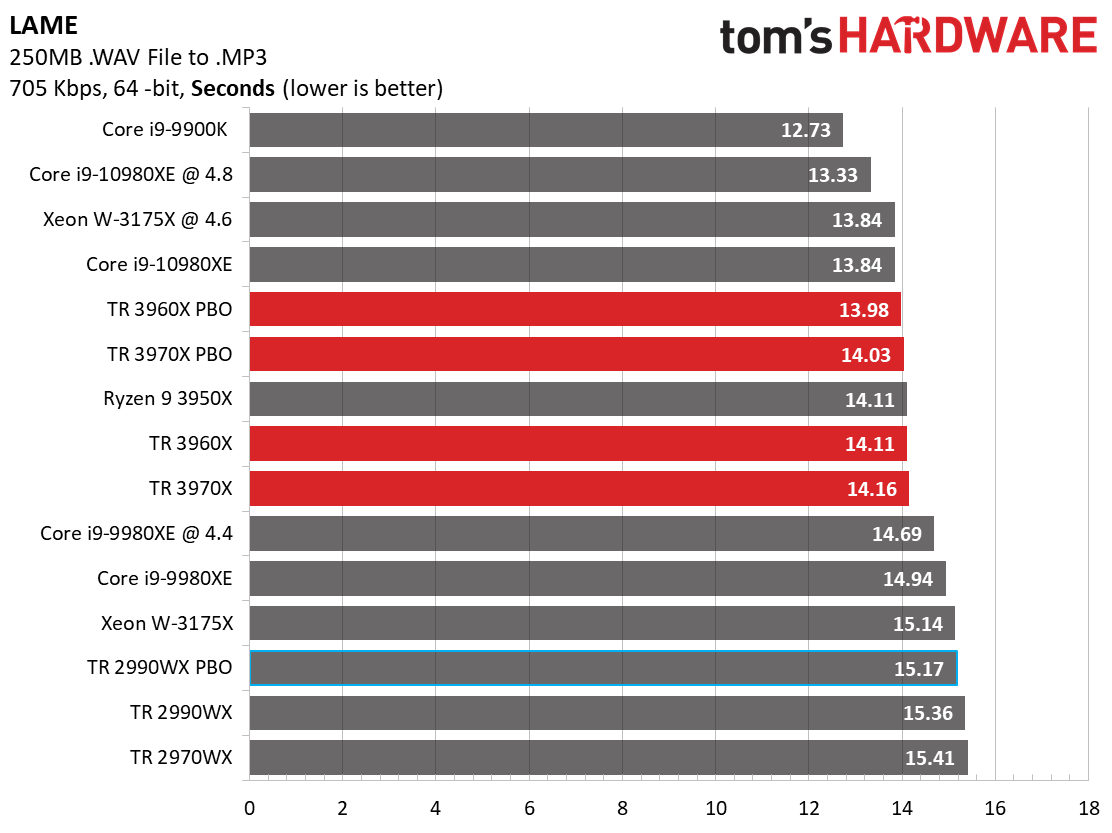
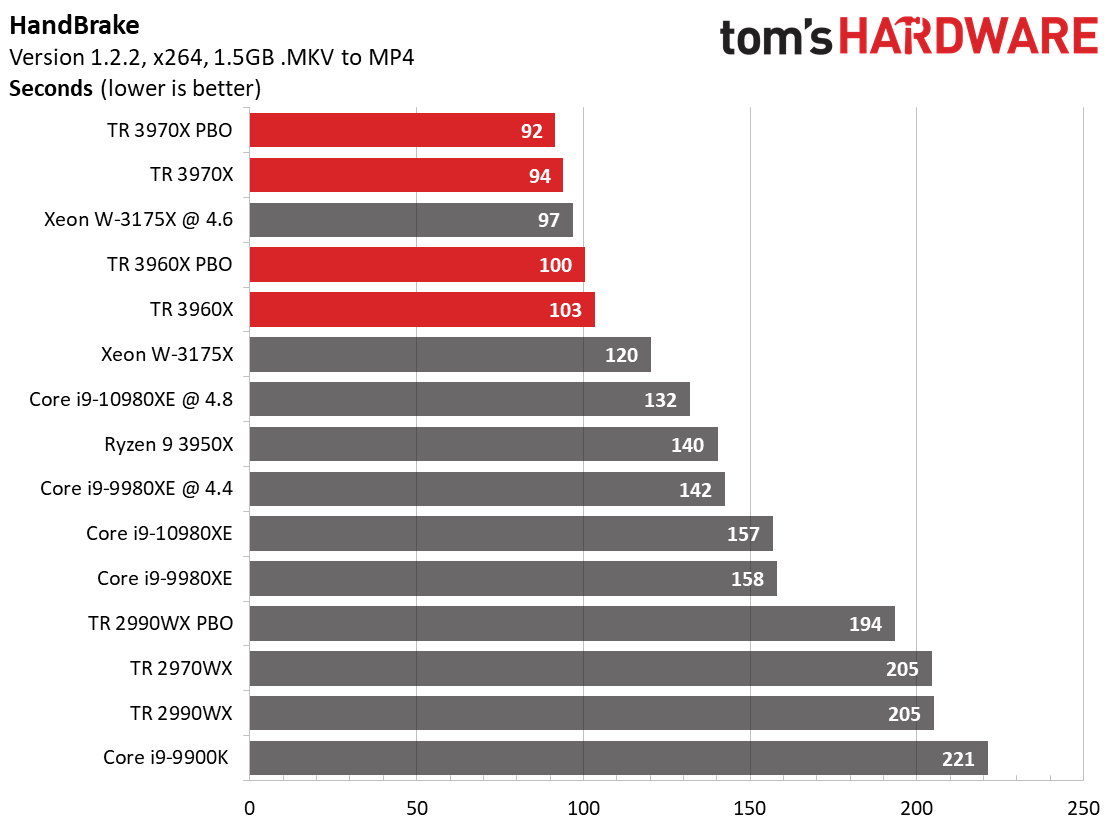
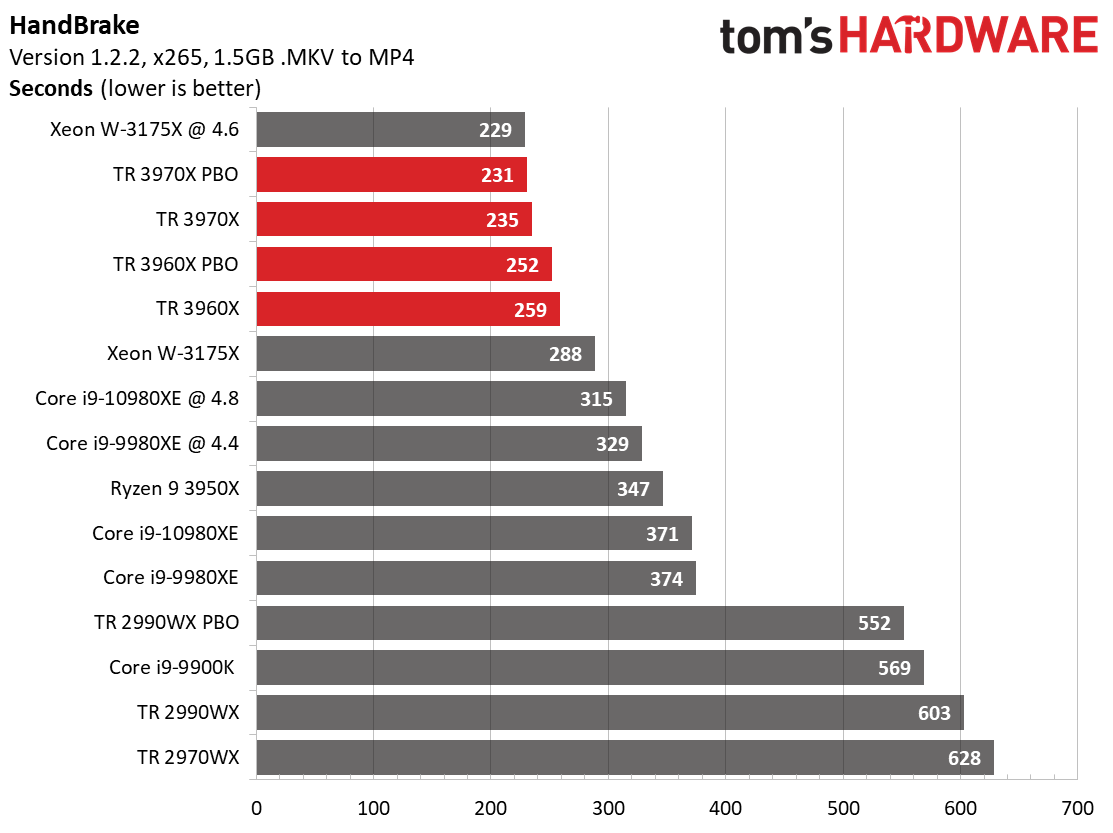
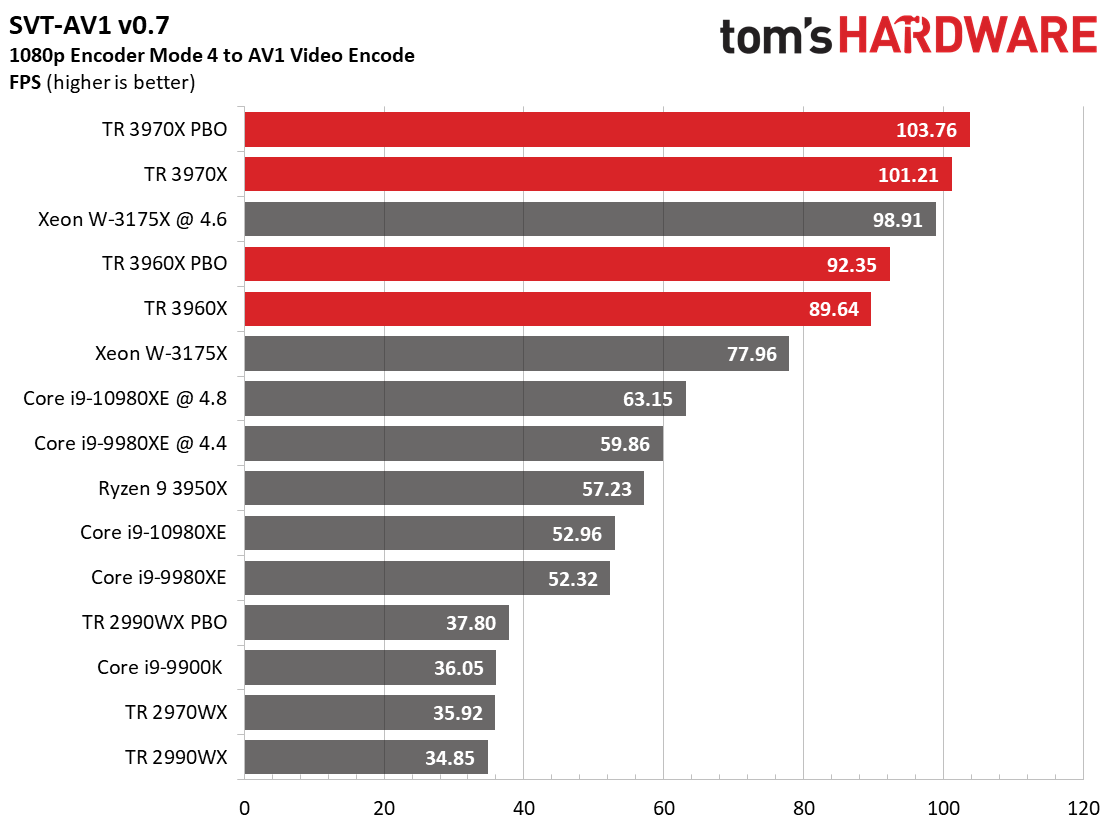
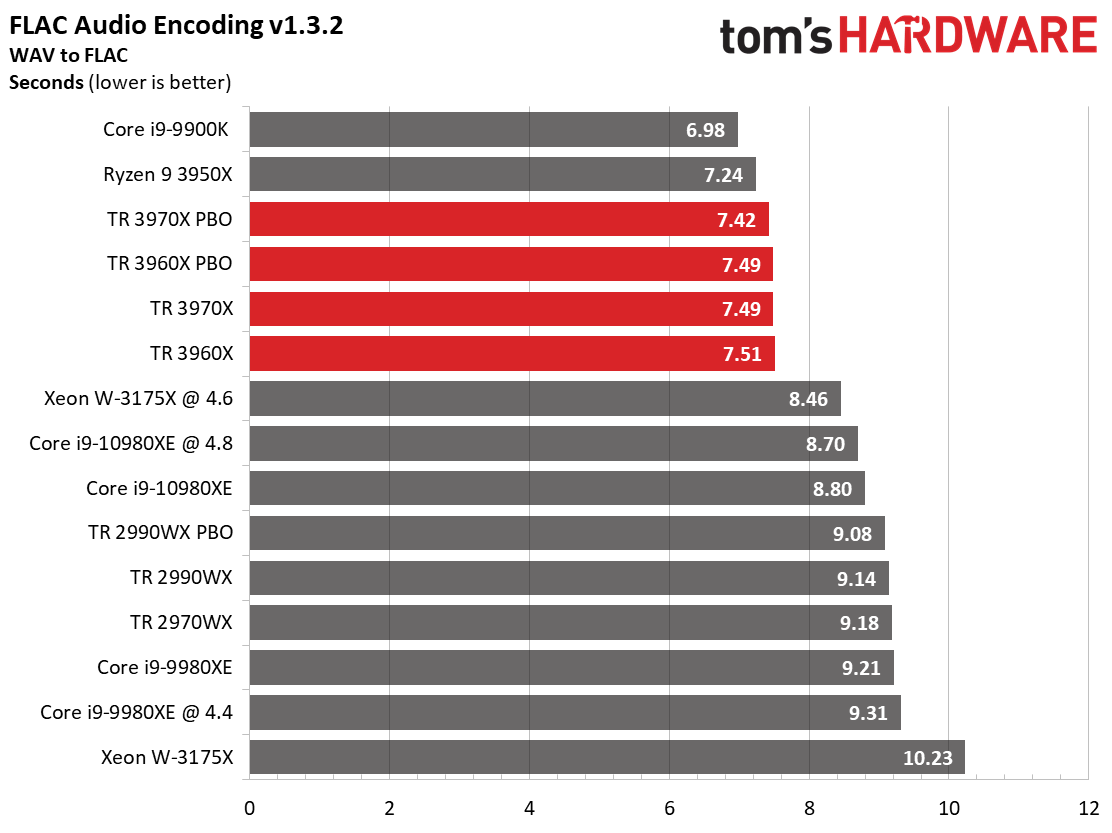
Intel's Core i9-10980XE excels at single-threaded workloads due to its aggressive 4.6 GHz boost clock, so at settings it takes the lead over the Threadripper processors in the LAME benchmark.
The Threadripper processors offer dominating performance at stock settings in the HandBrake x264 test, and in the AVX-heavy x265 version of that same benchmark. Flipping through to the SVT-AV1 encoder, which is heavily threaded, paints a similar picture. Yet again, the Threadripper 2990WX shows its bipolar nature as it lags in these tests due to its reduced memory throughput, highlighting AMD's solid performance gains with the same number of cores and threads.
Compression, Decompression, Encryption, AVX

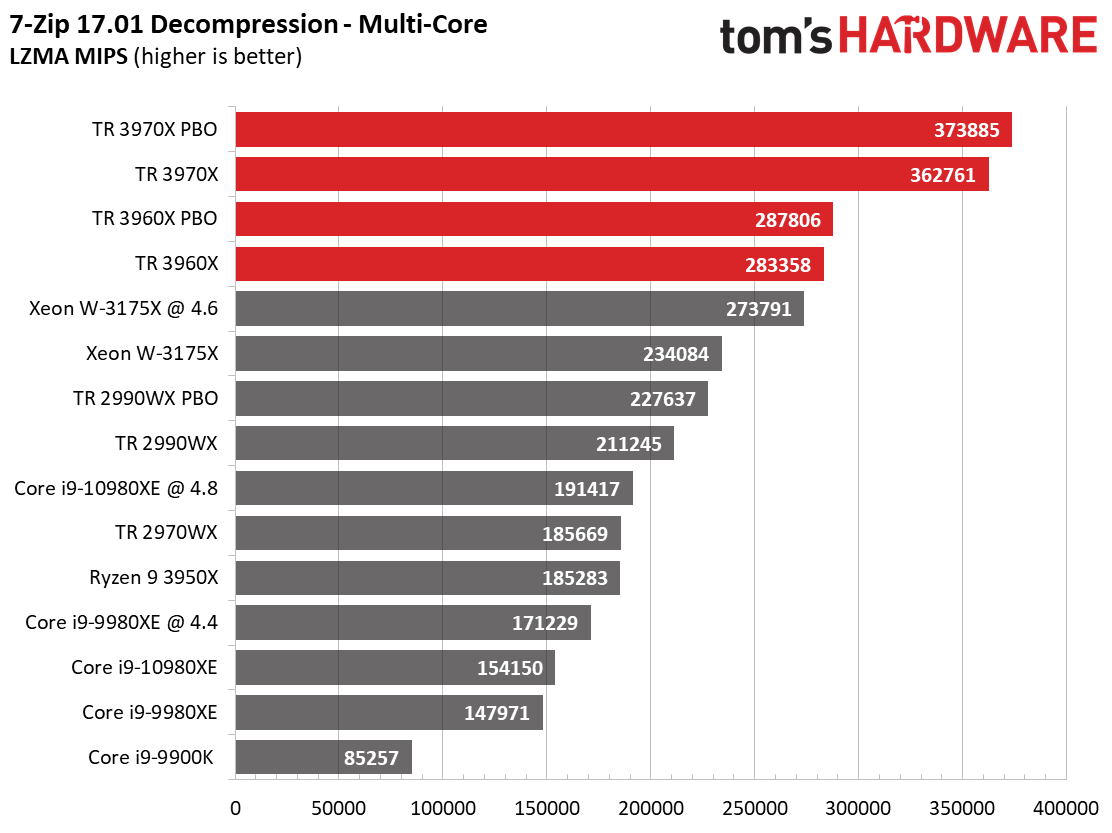
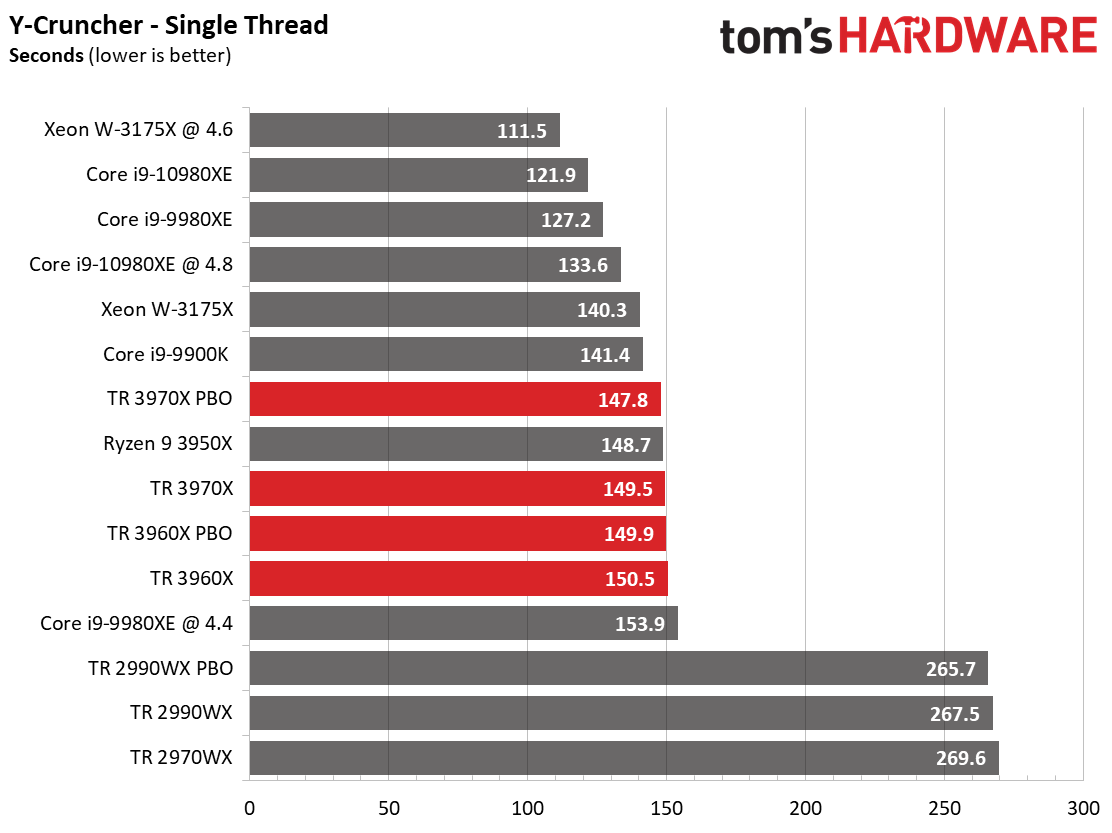
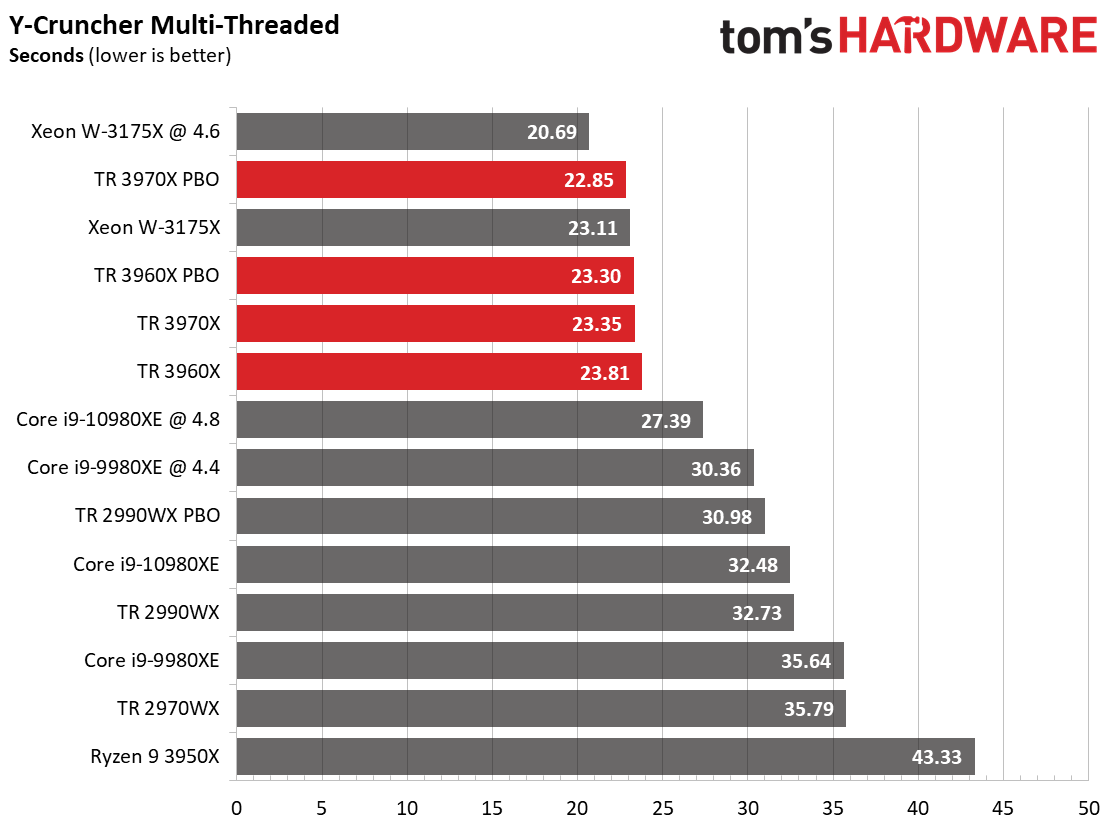
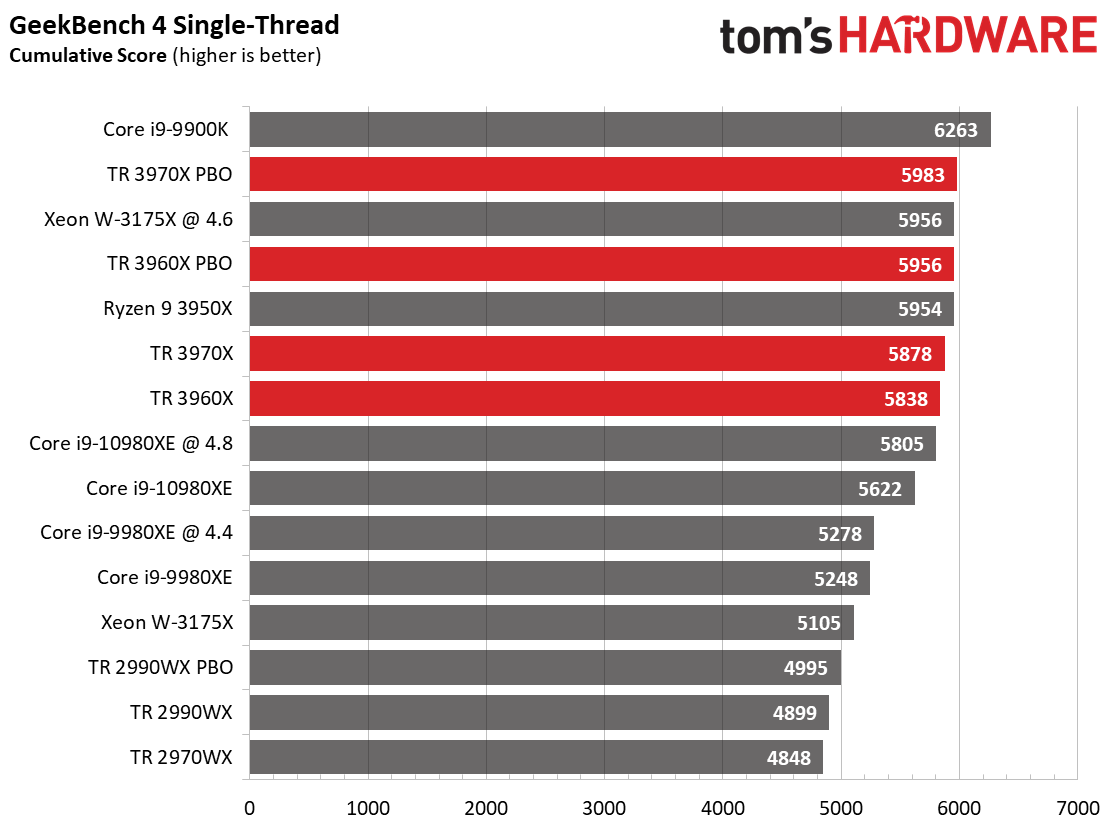
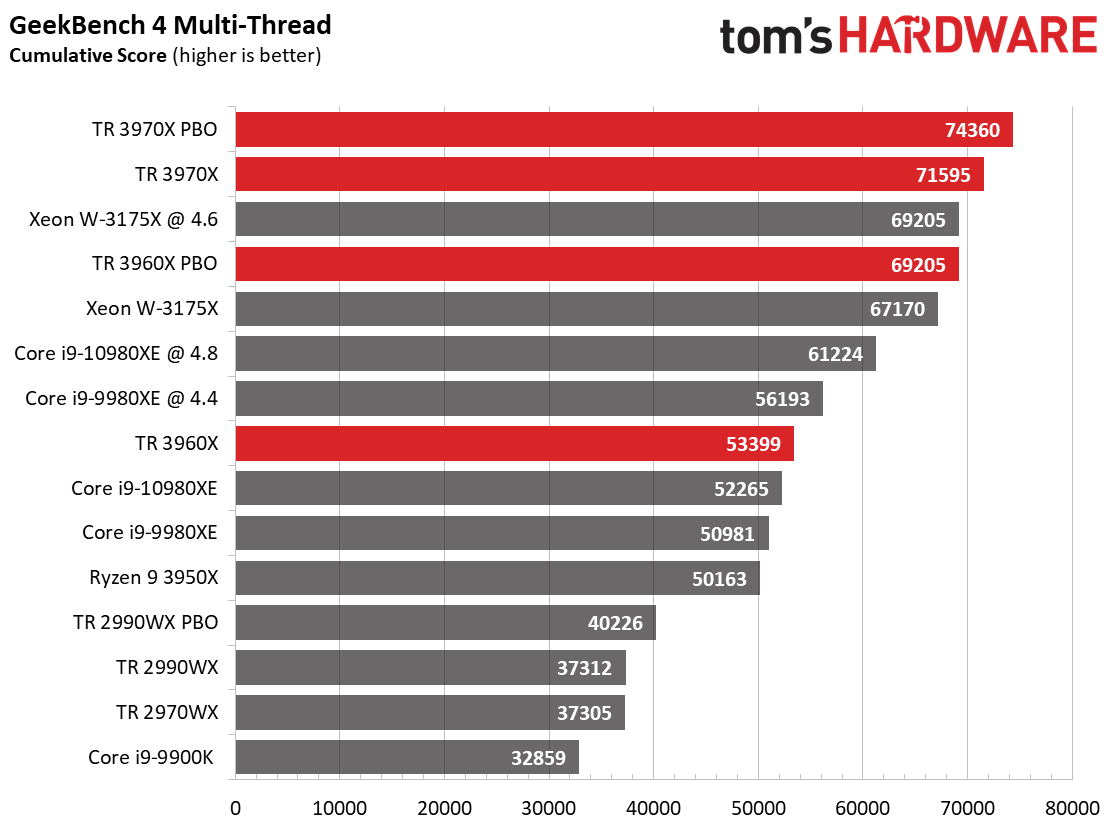
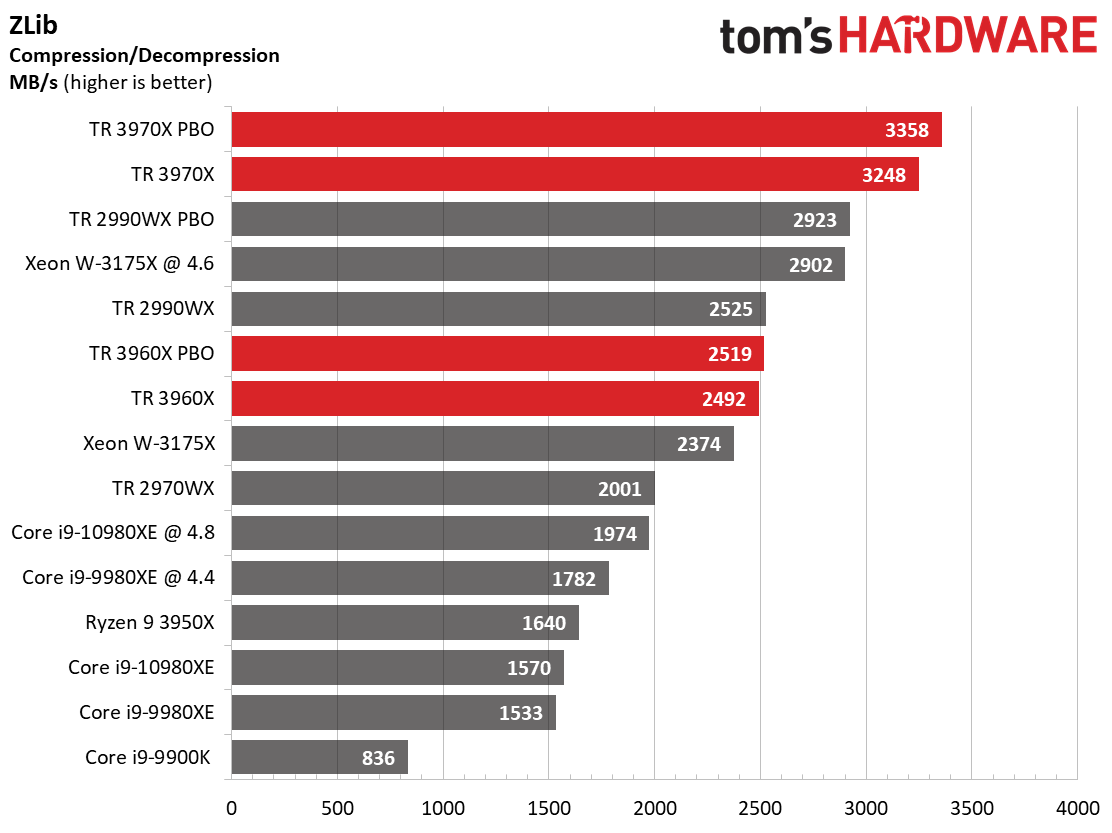
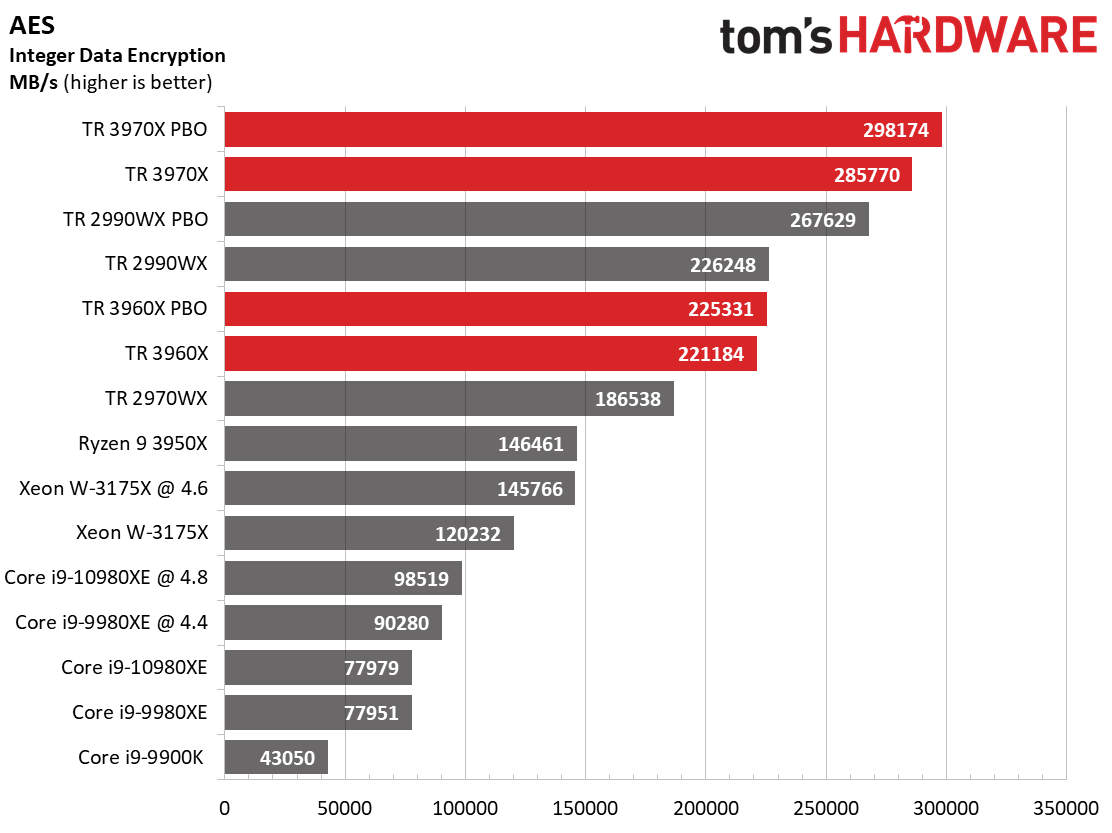
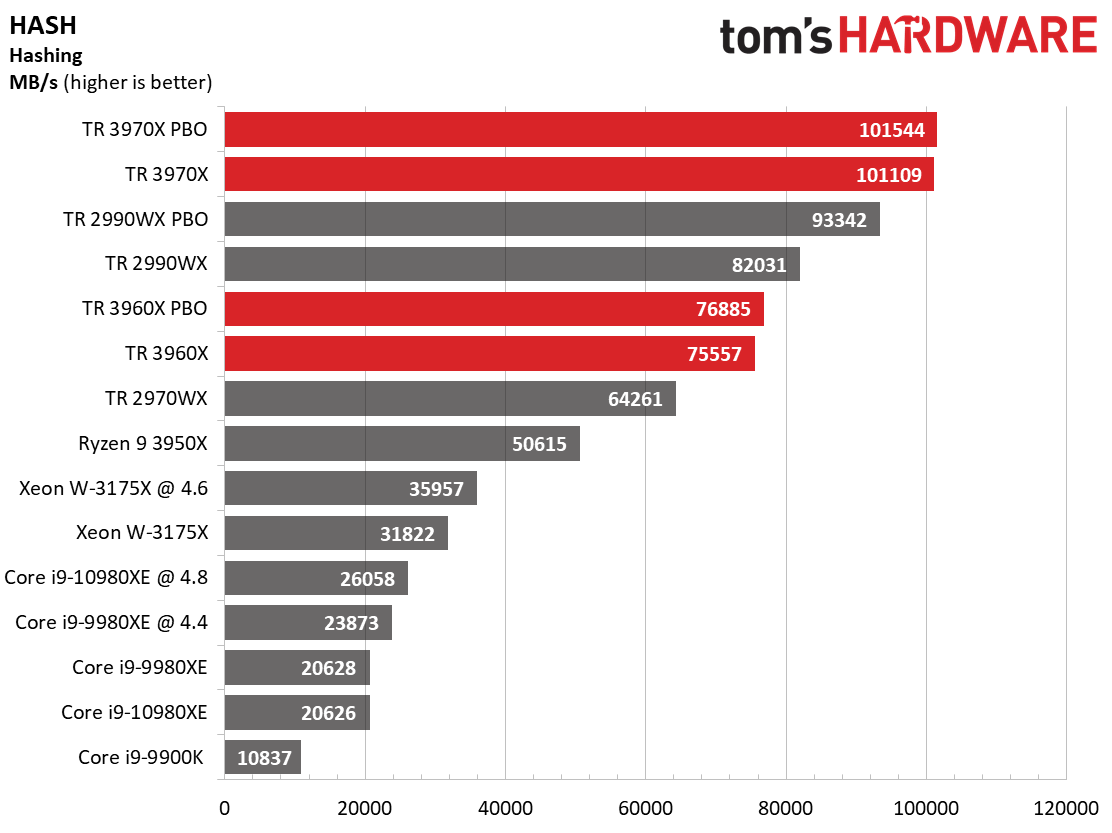
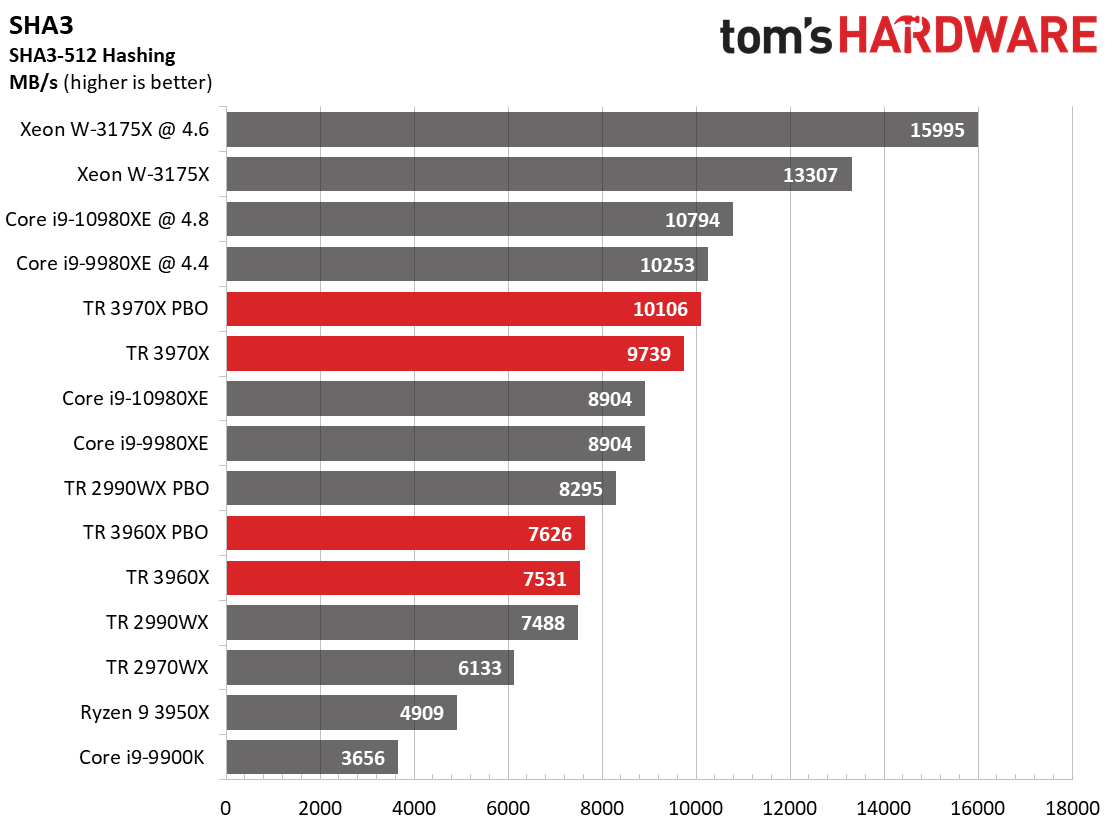
The 7zip and Zlib compression/decompression benchmarks rely heavily upon threading and work directly from system memory, thus avoiding the traditional storage bottleneck in these types of tasks.
The first-gen Threadripper processors are notorious for an unexplained deficiency in threaded 7zip compression workloads that find them trailing even the eight-core Core i9-9900K, but third-gen Threadripper marks a tremendous step forward in compression workloads. Threadripper leads the stock processors during these tests without storage throughput restrictions, but you also have access to the PCIe 4.0 interface with AMD's TRX40 platform. That extra throughput means these tremendous gains will largely transfer over to real-world application performance.
Get Tom's Hardware's best news and in-depth reviews, straight to your inbox.
The heavily-threaded y-cruncher benchmark, which computes pi using the demanding AVX instruction set, is well-suited for the Xeon W-3175X and it's superior performance with AVX workloads. At stock settings the 28-core chip beats the 32-core Threadripper 3970X, and overclocking opens a larger gap.
Office and Productivity
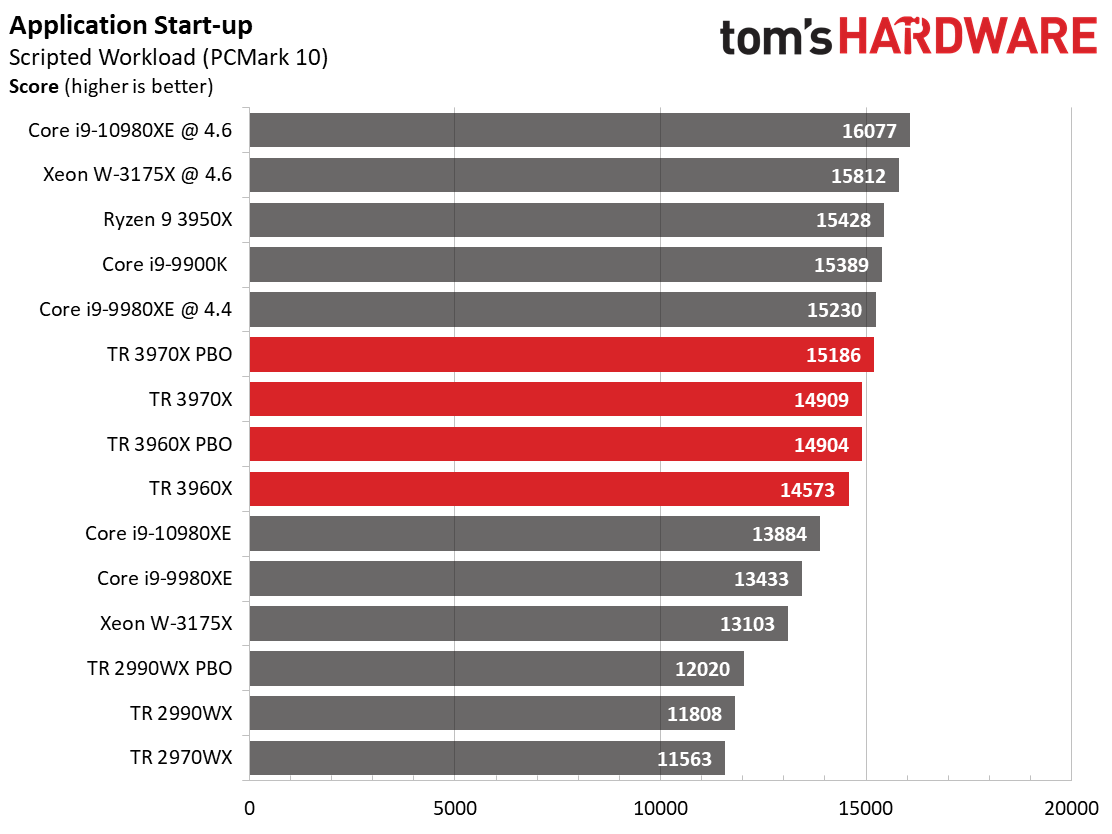
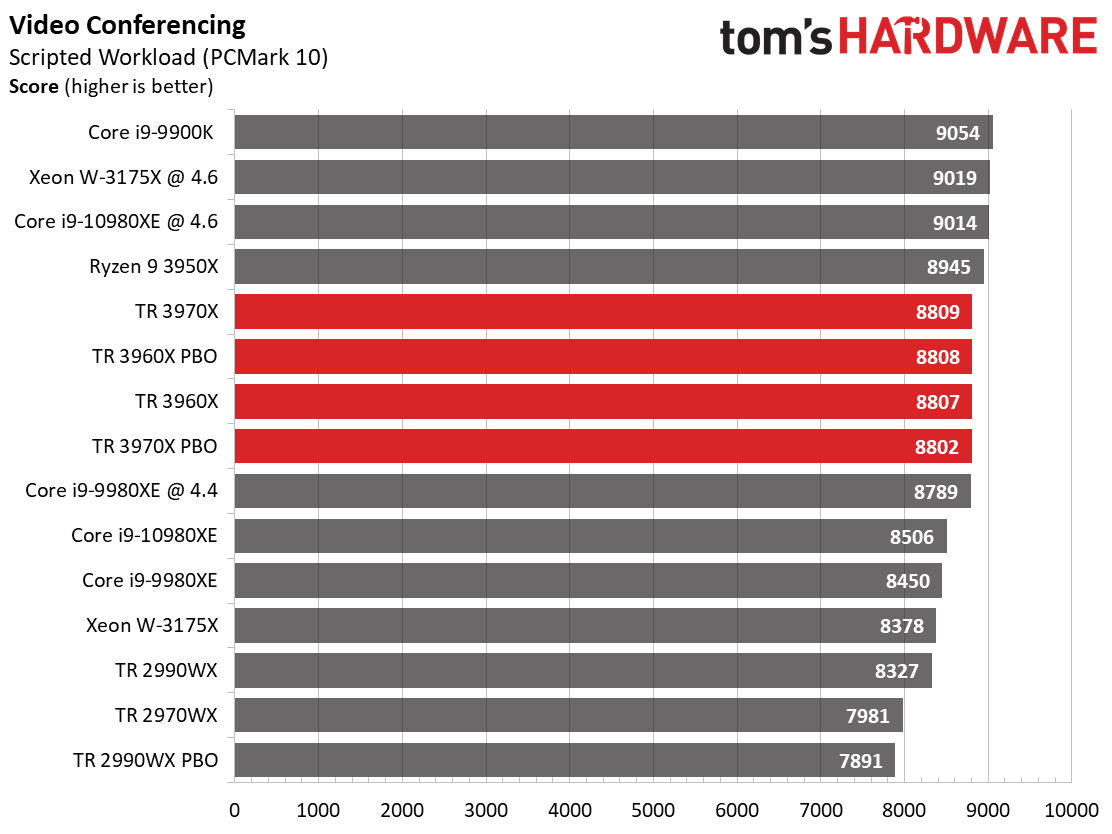

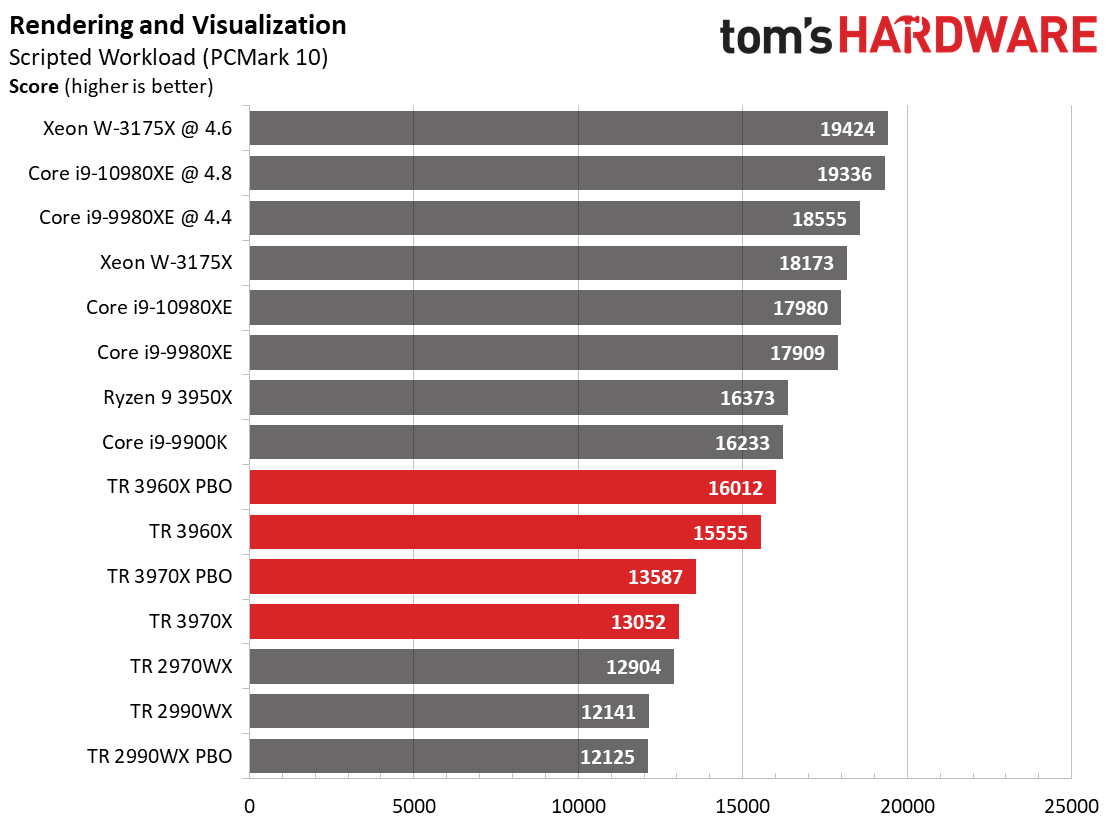
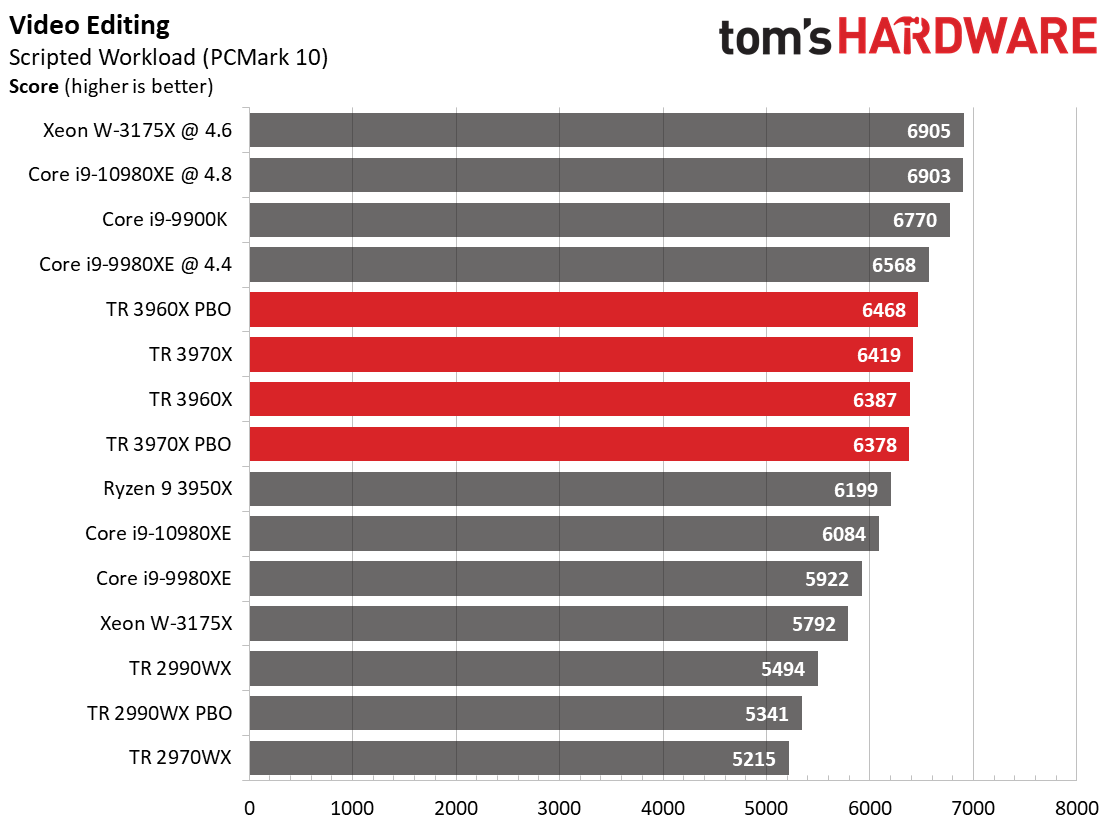
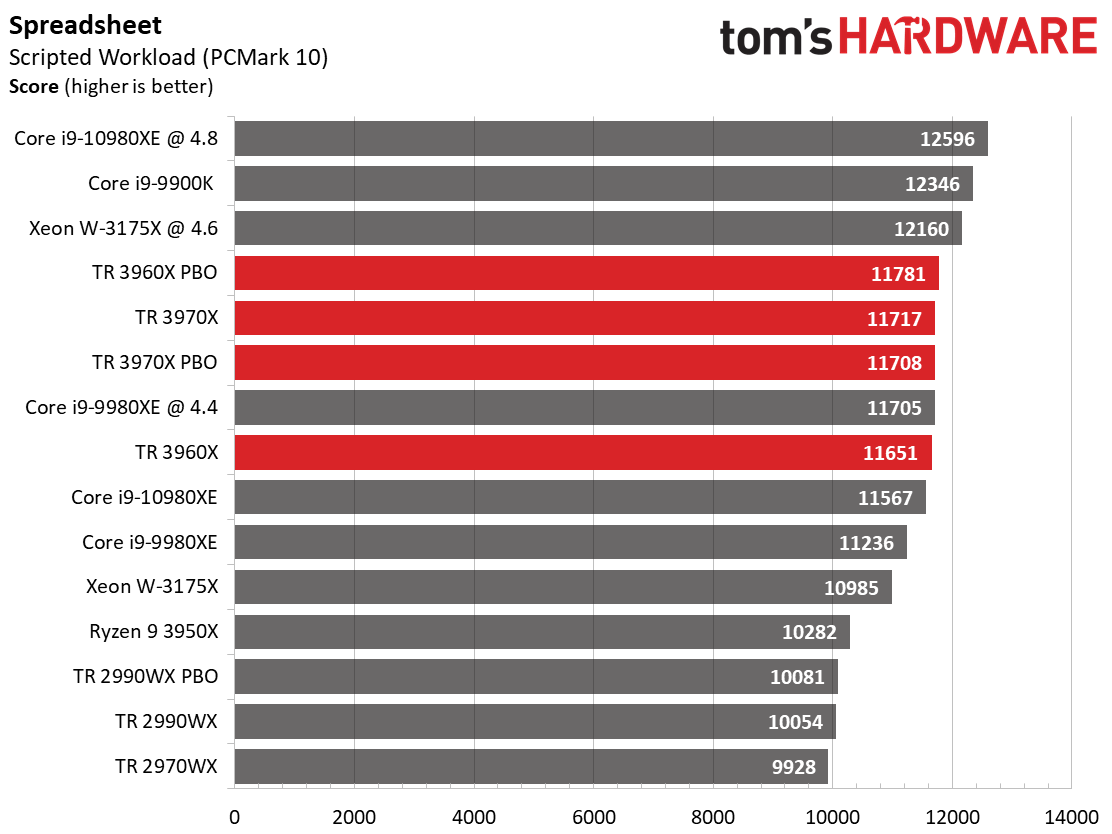
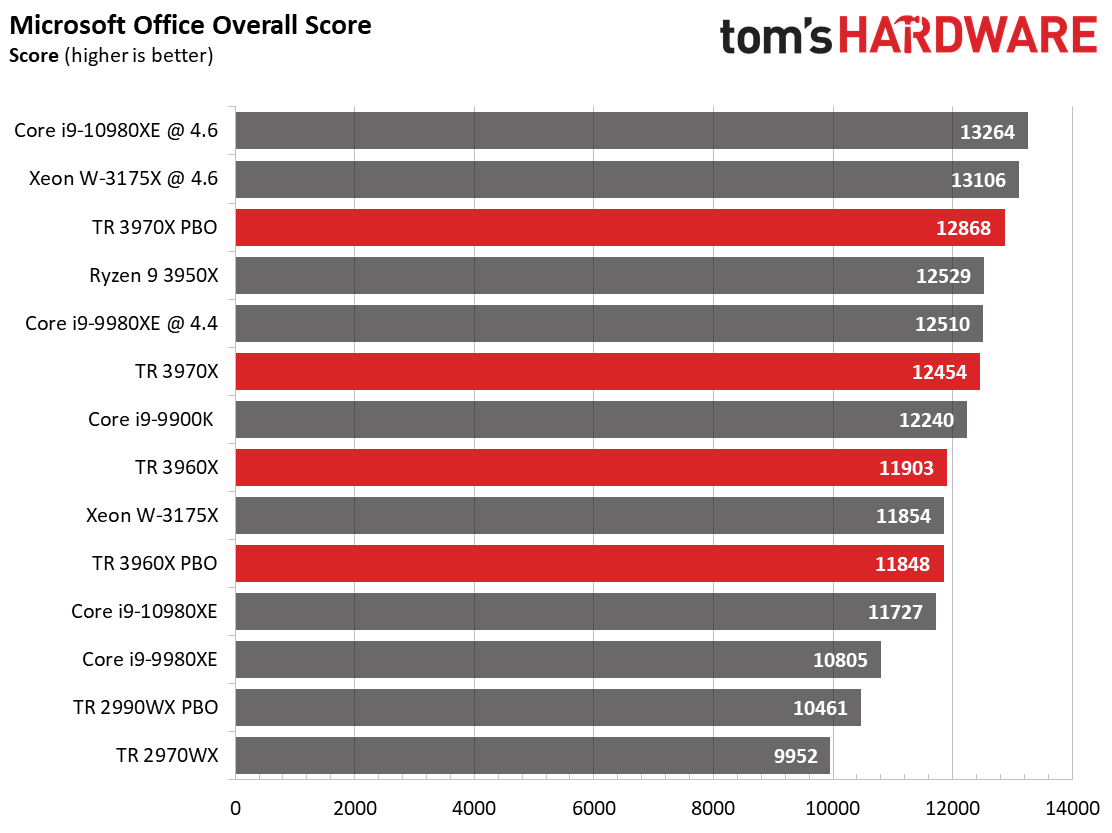
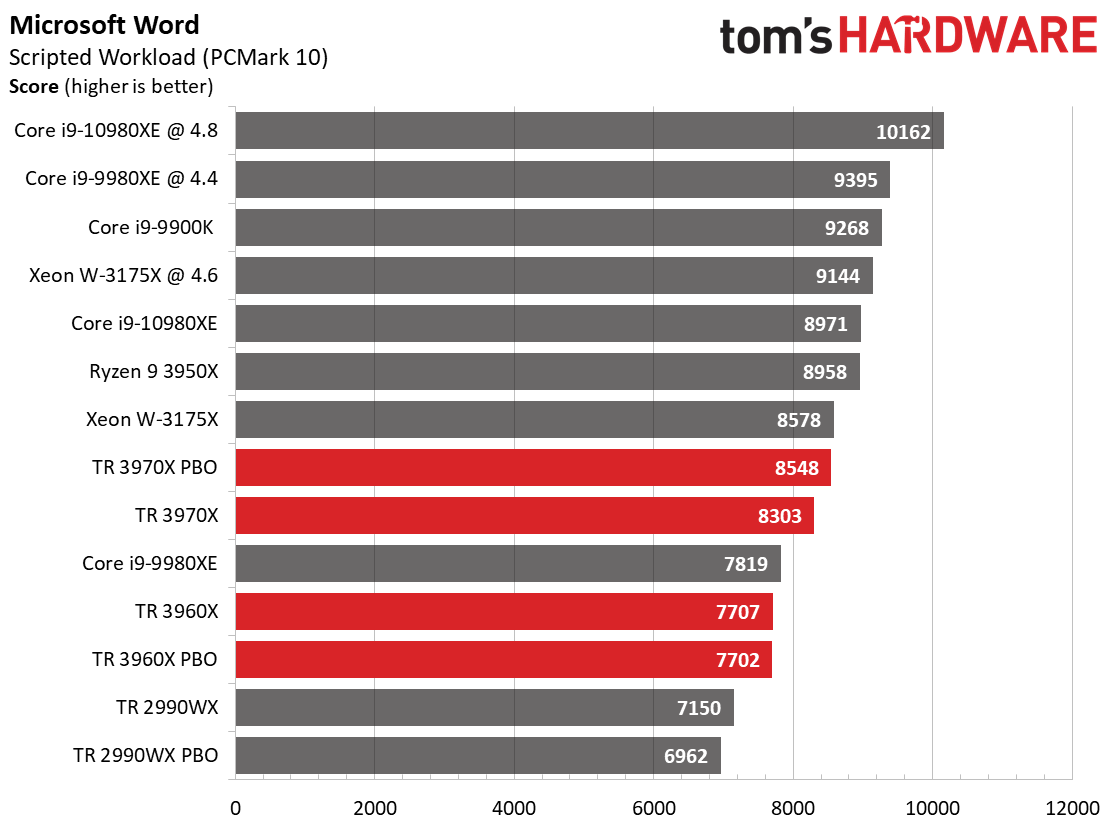

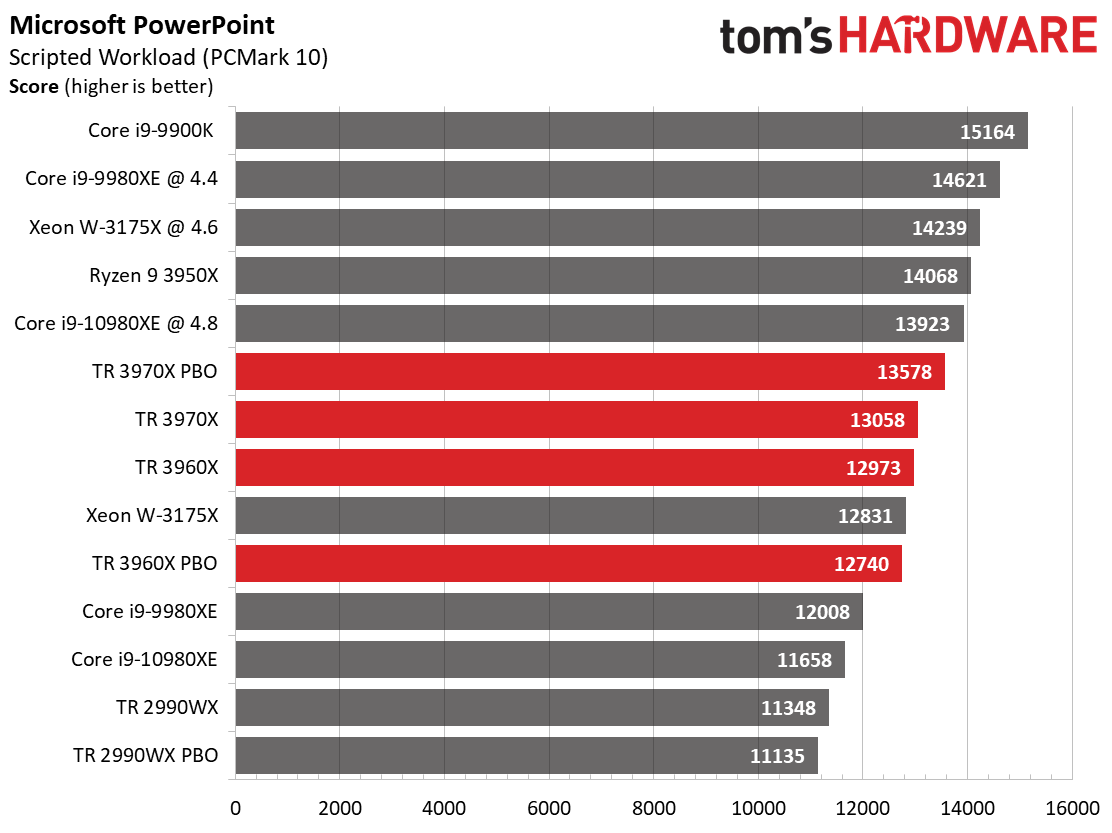
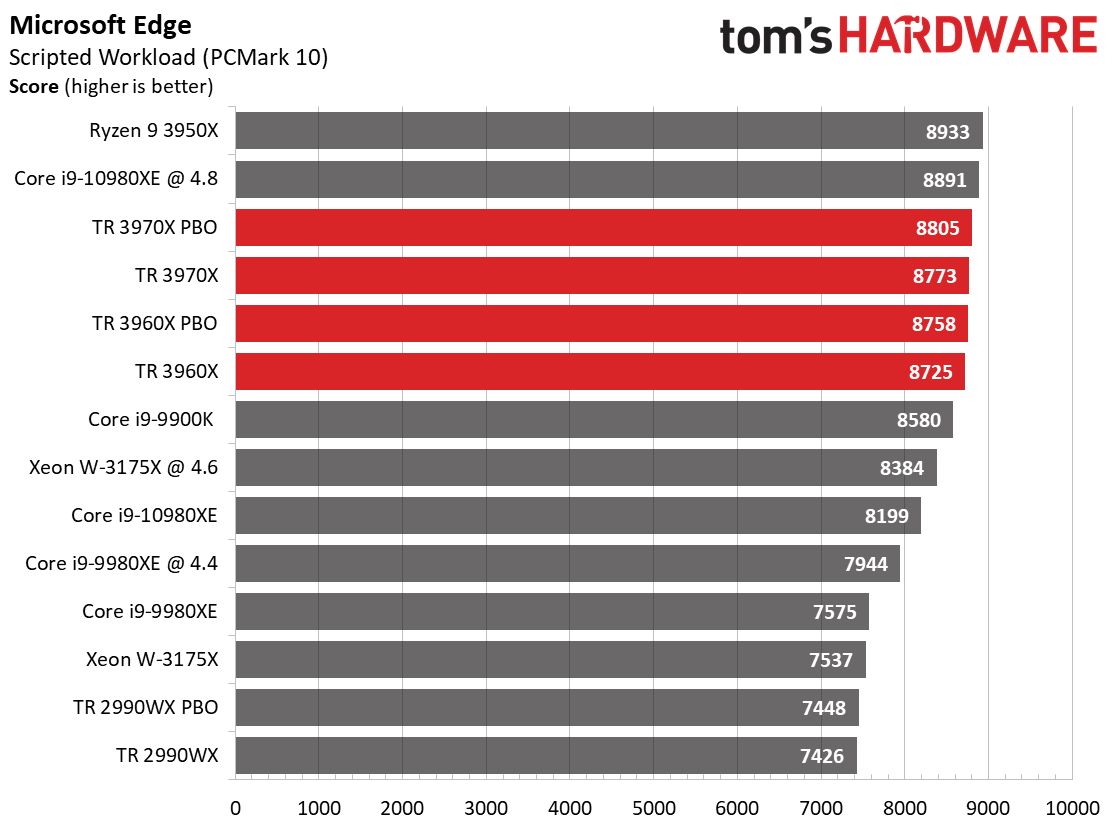
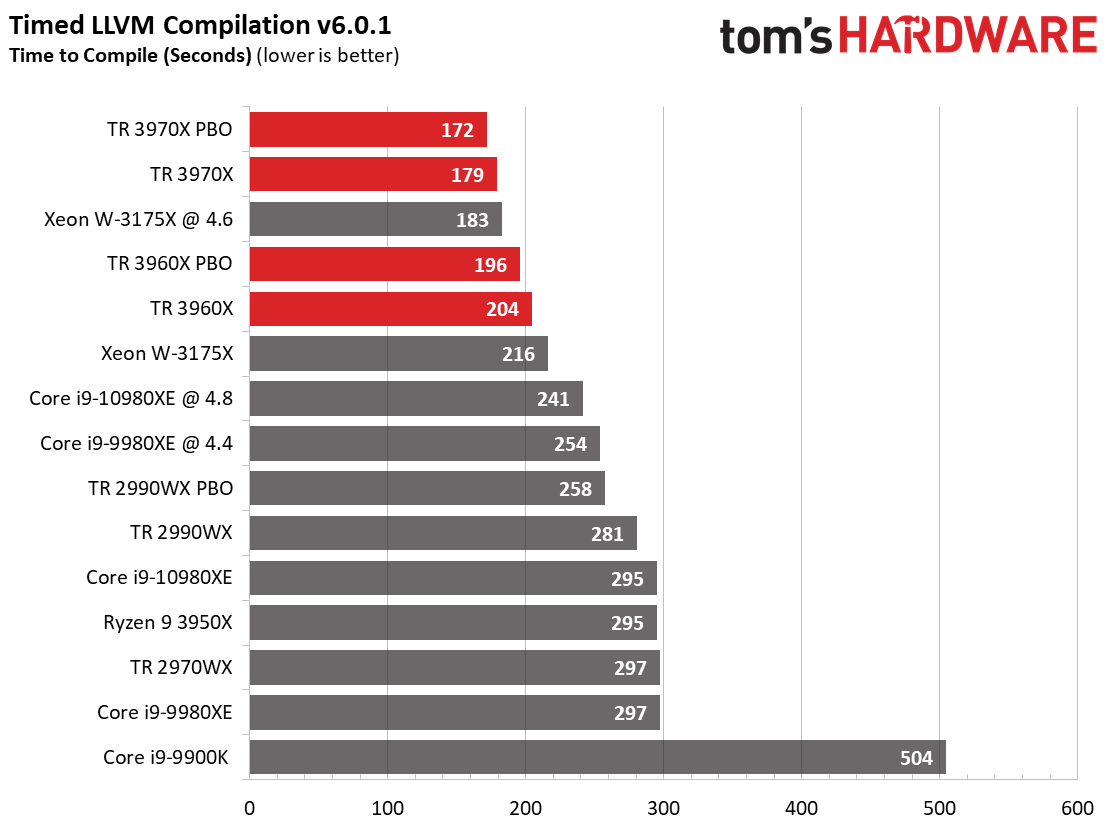
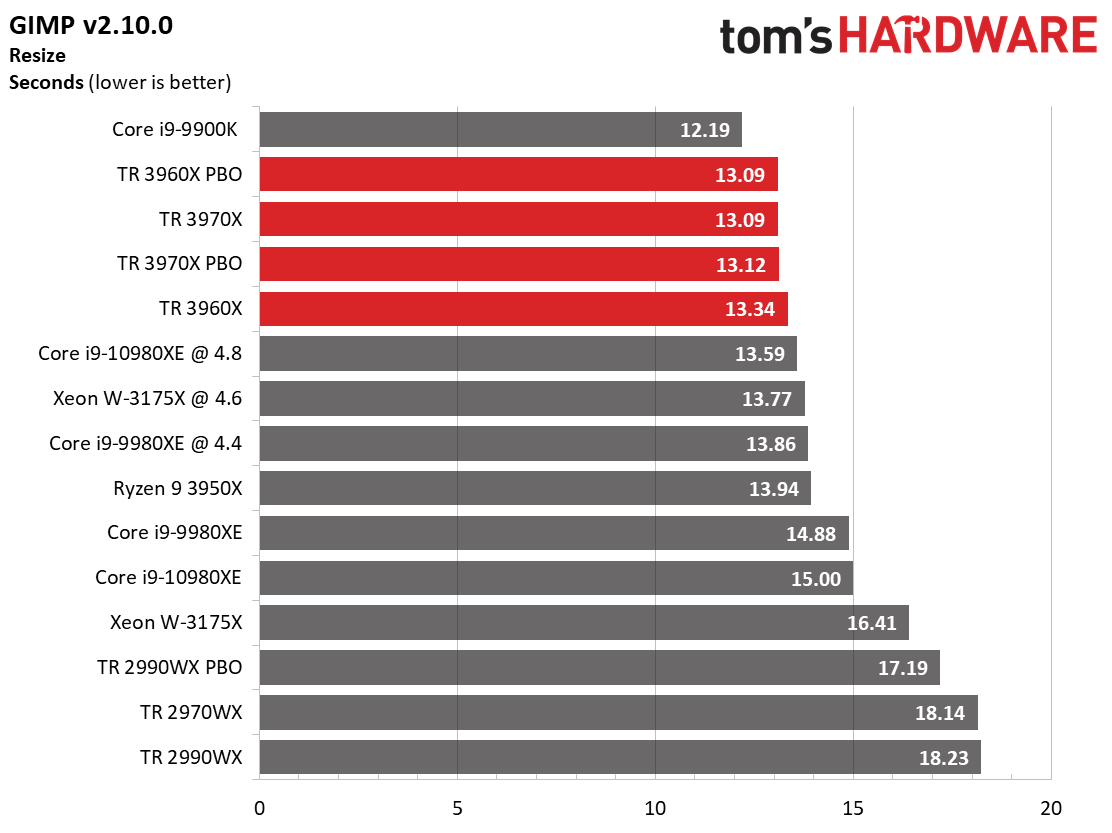

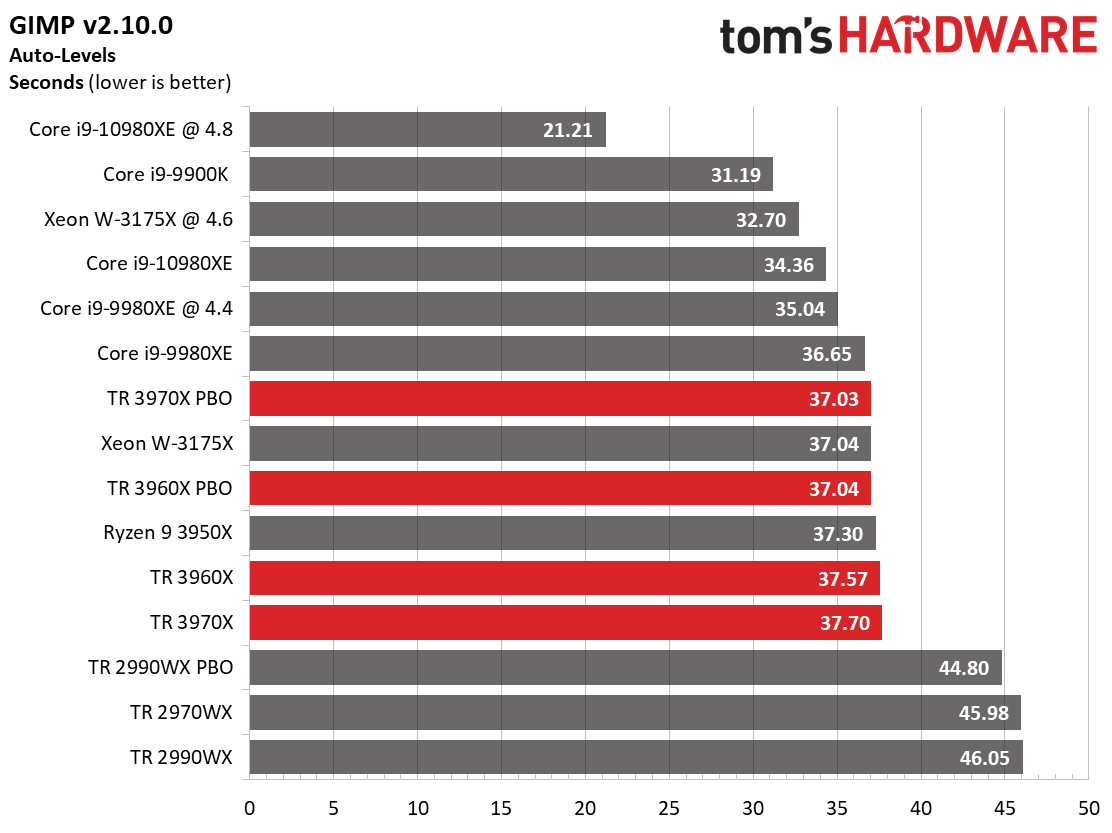

Microsoft's office suite runs via PCMark 10's new application test and uses real Microsoft Office applications. It seems like an odd fit to test these fire-breathing processors in such mundane tasks, but Office is ubiquitous. As we've come to expect, third-gen Threadripper is much more impressive in these workloads than its predecessor, but Intel remains very competitive in some of the subtests, particularly after overclocking.
The application start-up metric measures load time snappiness in word processors, GIMP, and Web browsers. Other platform-level considerations affect this test as well, including the storage subsystem. The Threadripper 3970X falls to the middle of the pack, while Intel's chips leverage their frequency/overclocking advantage to take the lead.
The timed-LLVM compilation workload is more well-suited to the 3970X, and overclocking offers a small performance boost.
Web Browser
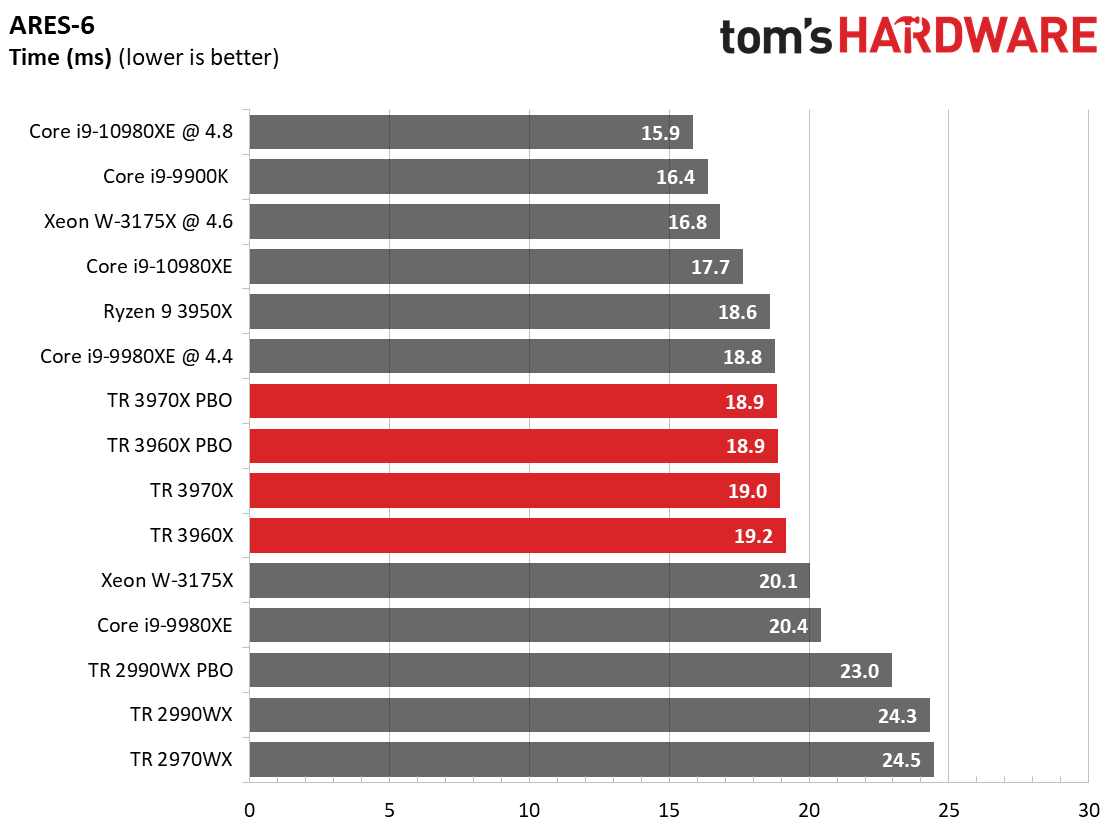
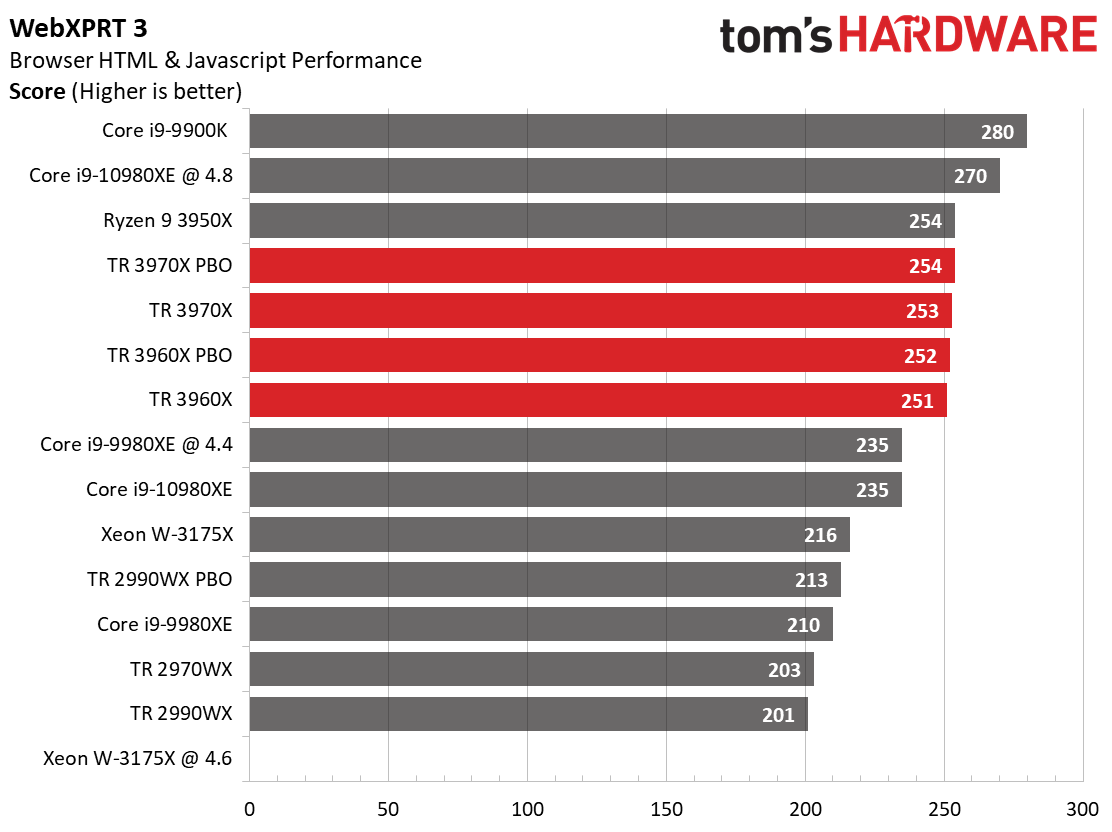
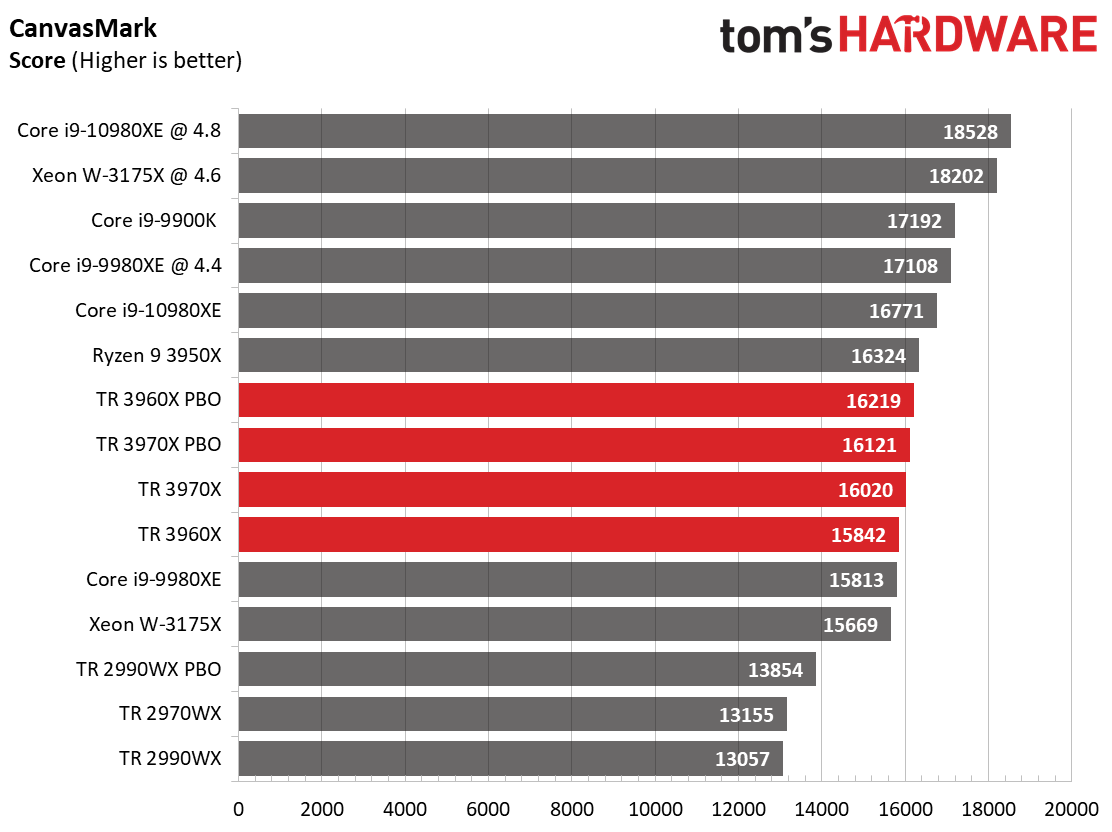
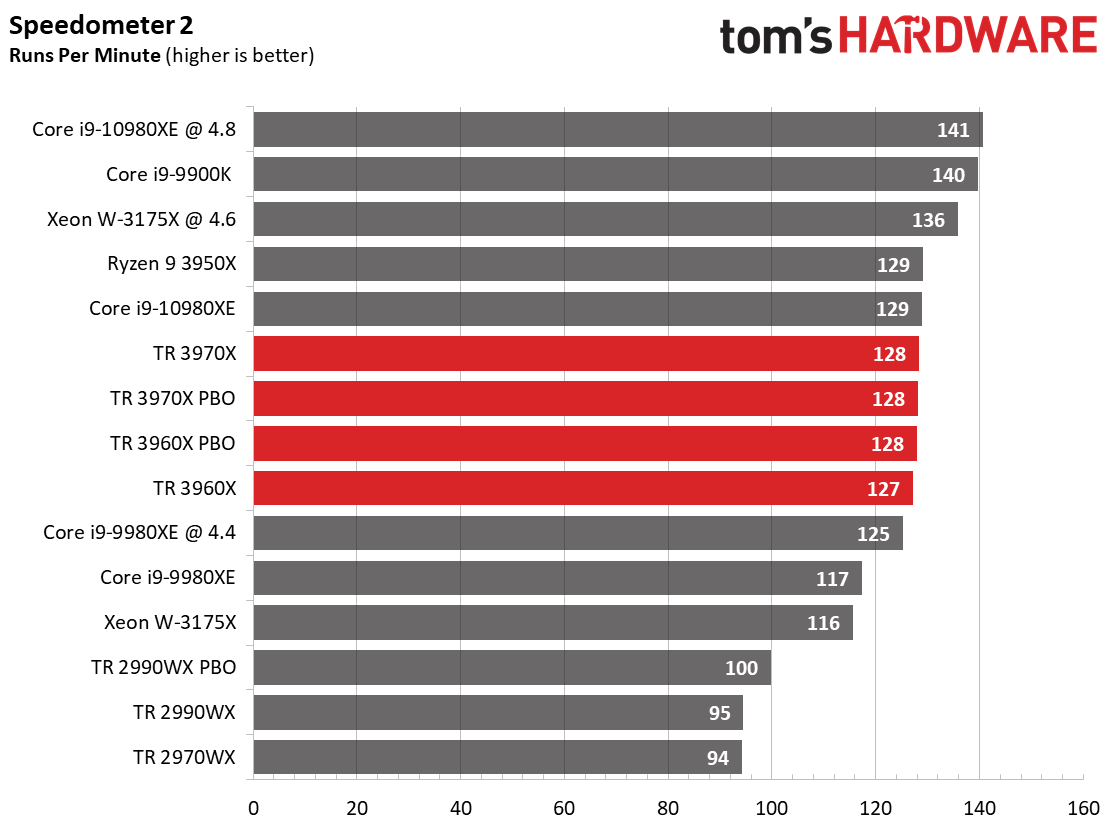
Browsers tend to be impacted more by the recent security mitigations than other types of applications, so Intel has generally taken a haircut in these benchmarks of fully-patched systems. Unsurprisingly, the Ryzen 9 3950X and Core i9-9900K are pretty agile in these workloads, but the Core i9-10980XE in stock trim is plenty snappy, too.
MORE: Best CPUs
MORE: Intel & AMD Processor Hierarchy
MORE: All CPUs Content
Current page: Threadripper 3970X Application Performance
Prev Page Threadripper 3970X SPEC Workstation and Adobe Performance Next Page Conclusion
Paul Alcorn is the Editor-in-Chief for Tom's Hardware US. He also writes news and reviews on CPUs, storage, and enterprise hardware.
-
Vrooman By default, Numpy and Scipy in Python are compiled with Intel's MKL. This math library provides excellent results with Intel CPUs but quite poor results with AMD. Changing the compile flag to use OpenBlas math library provides significant speedups ( sometimes on the order of 100% ) with AMD processors in Numpy and Scipy. This has been reported fairly often in Puget Systems & Phonorix processor reviews and I've personally seen it in my 3900x use. Just a note I thought would be useful to point out ( as I'm not sure this is addressed in the review )Reply -
g-unit1111 Kind of unfair that the 3175X gets lumped in that category since it's nearly 3 times as expensive as the other CPUs included in the benchmark and has almost double the cores and threads. It's like comparing a Bentley Flying Spur to a Nissan Maxima.Reply -
delaro That is a massive amount of cores and threads that are twiddling their combined thumbs when your gaming. I'm surprised this review focused so much on that aspect. This isn't the kind of chip you buy for that use, this is the kind of chip you buy to make the games.:unsure:Reply -
AC5L4T3R 3950x currently on sale for 850 euros in Germany compared to 1550 for the 3960x. Really struggling to justify paying almost twice as much when theres nowhere near twice as much performance.Reply -
larkspur Reply
Huh? We're comparing high-end CPUs here. Most of the folks buying a threadripper are using it for professional purposes. Why wouldn't we include other high-end CPUs used for professional purposes? The 3175X isn't even the most expensive chip listed. The inclusion of a Ryzen 3950x is a nice comparison for those deciding whether the extra ~$1250 for the 3970x or ~$650 for the 3960x makes sense (not including platform costs). Just as the inclusion of the Intel 3175X helps to decide whether another ~$1000 makes sense to go with a somewhat comparable Intel. In the professional world these price differences aren't nearly as large as they seem. Time=money.g-unit1111 said:Kind of unfair that the 3175X gets lumped in that category since it's nearly 3 times as expensive as the other CPUs included in the benchmark and has almost double the cores and threads. It's like comparing a Bentley Flying Spur to a Nissan Maxima.
Still upset about abandoning TR4 but I know, I know. That's how it goes... <sigh> oh well :( -
RodroX Why not use a pci-e 4.0 nvme SSD for the tests?Reply
And why having to buy a new Mobo is a Con? Is the only way to support for PCI-E 4.0. This is not a consumer chip, so not having backward motherboard compatibility is not really an issue. -
larkspur Reply
Well, ultimately you're right, it's not a dealbreaker. It's just a PiTA - swapping a CPU is relatively quick. Swapping out an entire mobo + fresh OS and software install takes a lot more time. Like I said, you're right it's not a dealbreaker, but it would have been nice to get a Zen 2 chip in a TR4 mobo.RodroX said:And why having to buy a new Mobo is a Con? Is the only way to support for PCI-E 4.0. This is not a consumer chip, so not having backward motherboard compatibility is not really an issue. -
TJ Hooker Reply
For the same reason that it's nice that Ryzen 3000 chips work on pre-X570 motherboards: it's nice to have that option. The new chips are still attractive options even without PCIe 4.0.RodroX said:And why having to buy a new Mobo is a Con? Is the only way to support for PCI-E 4.0. -
RodroX ReplyTJ Hooker said:For the same reason that it's nice that Ryzen 3000 chips work on pre-X570 motherboards: it's nice to have that option. The new chips are still attractive options even without PCIe 4.0.
I know that, heck I have an R5 3600 runing on inexpensive B450 mobo. But if you swap pins around, and you don't have extra ones like it seems AMD had to accomodate the pci-4 support on AM4 socket for its consumer chips, then theres no much you can do right?
Its nice to have, but I still wont think is a Con.